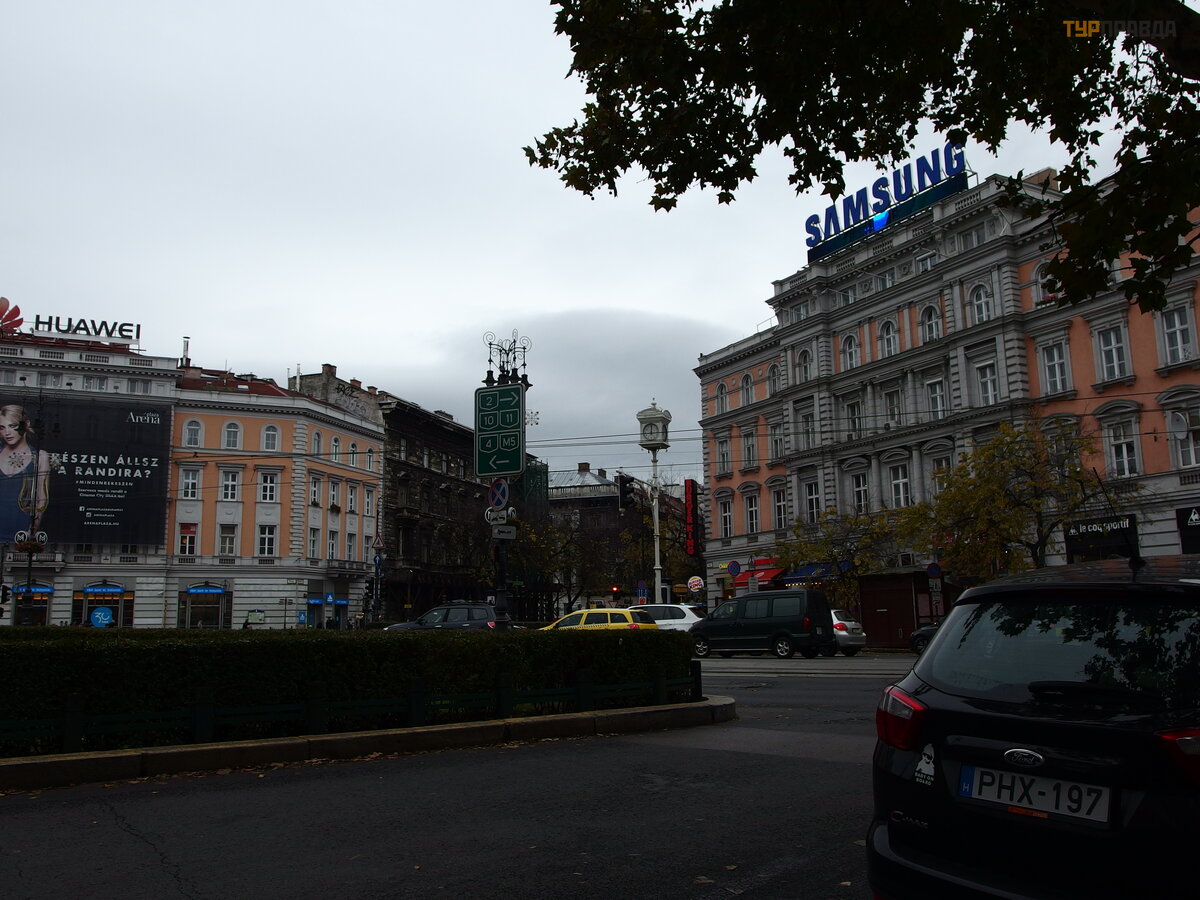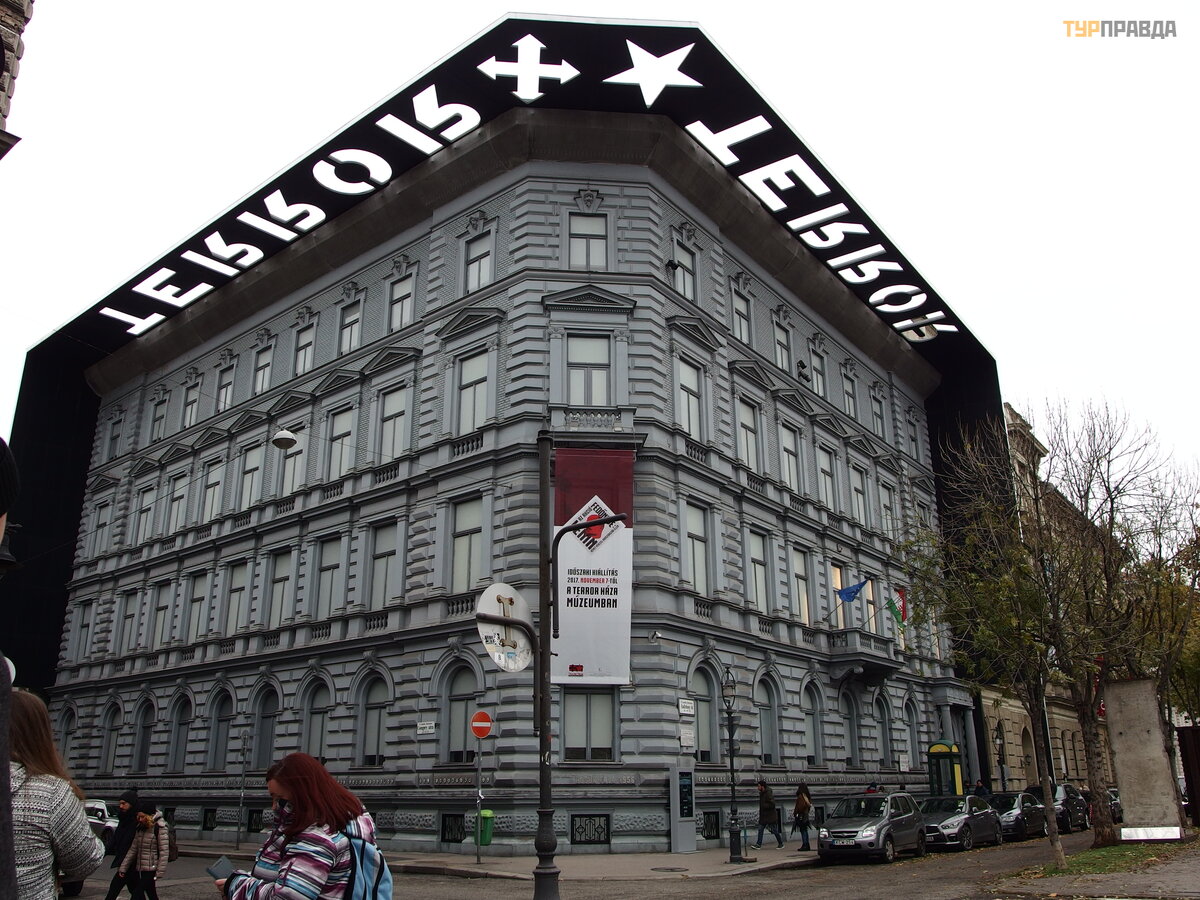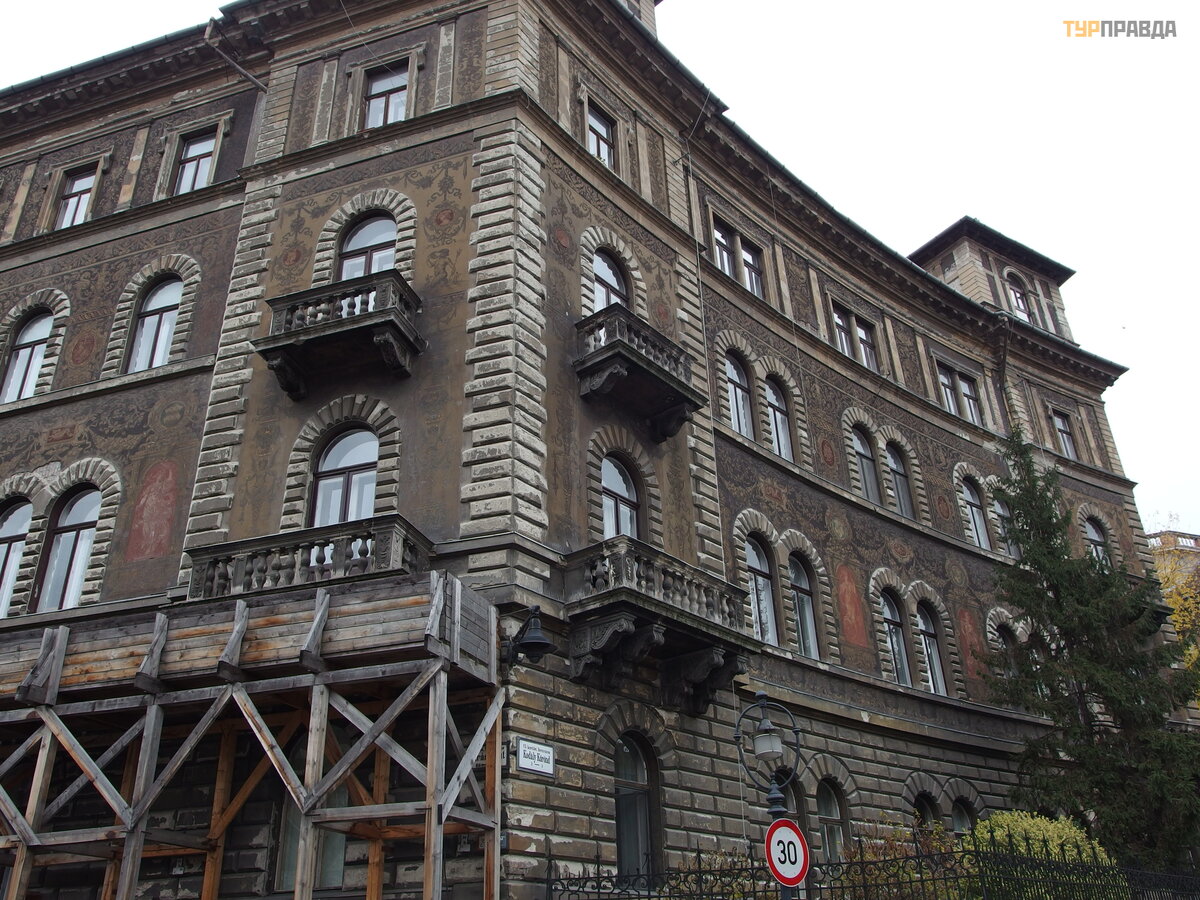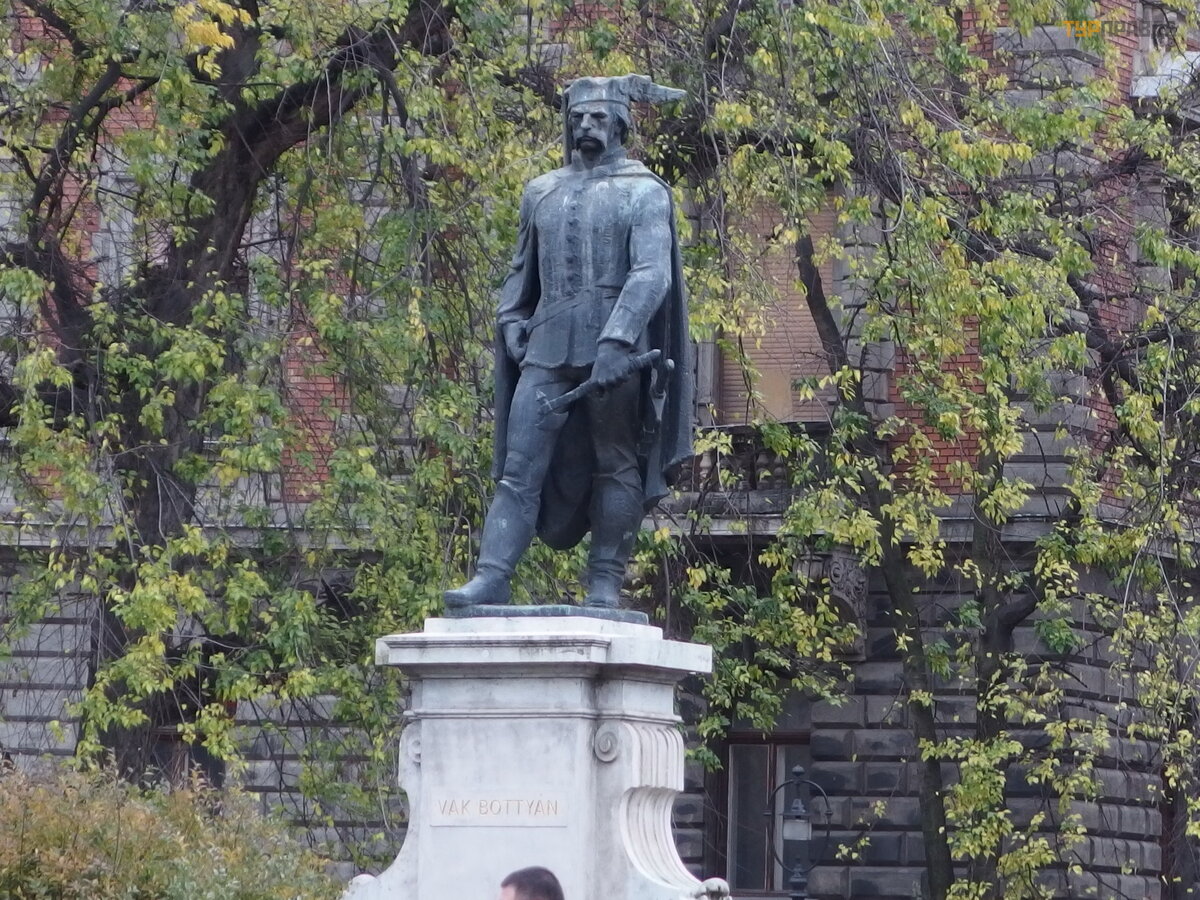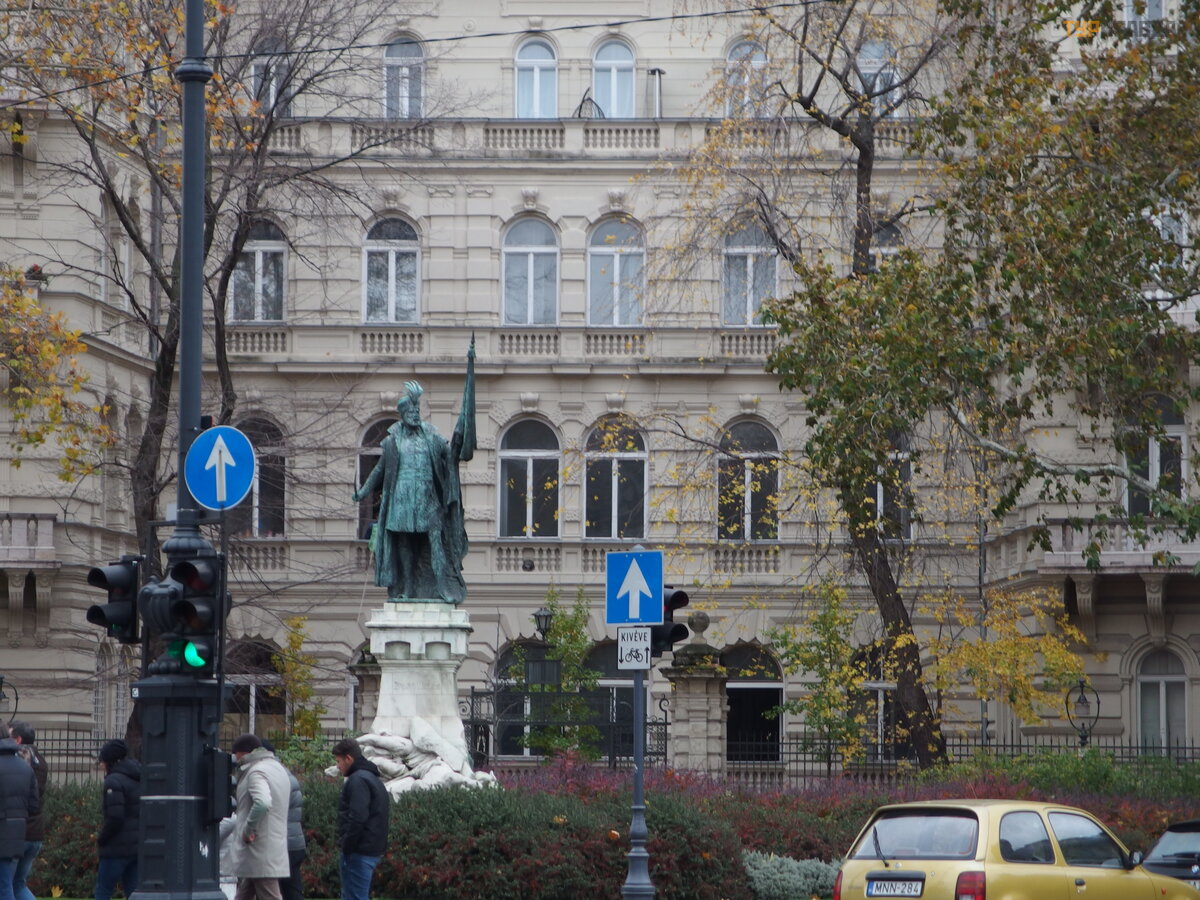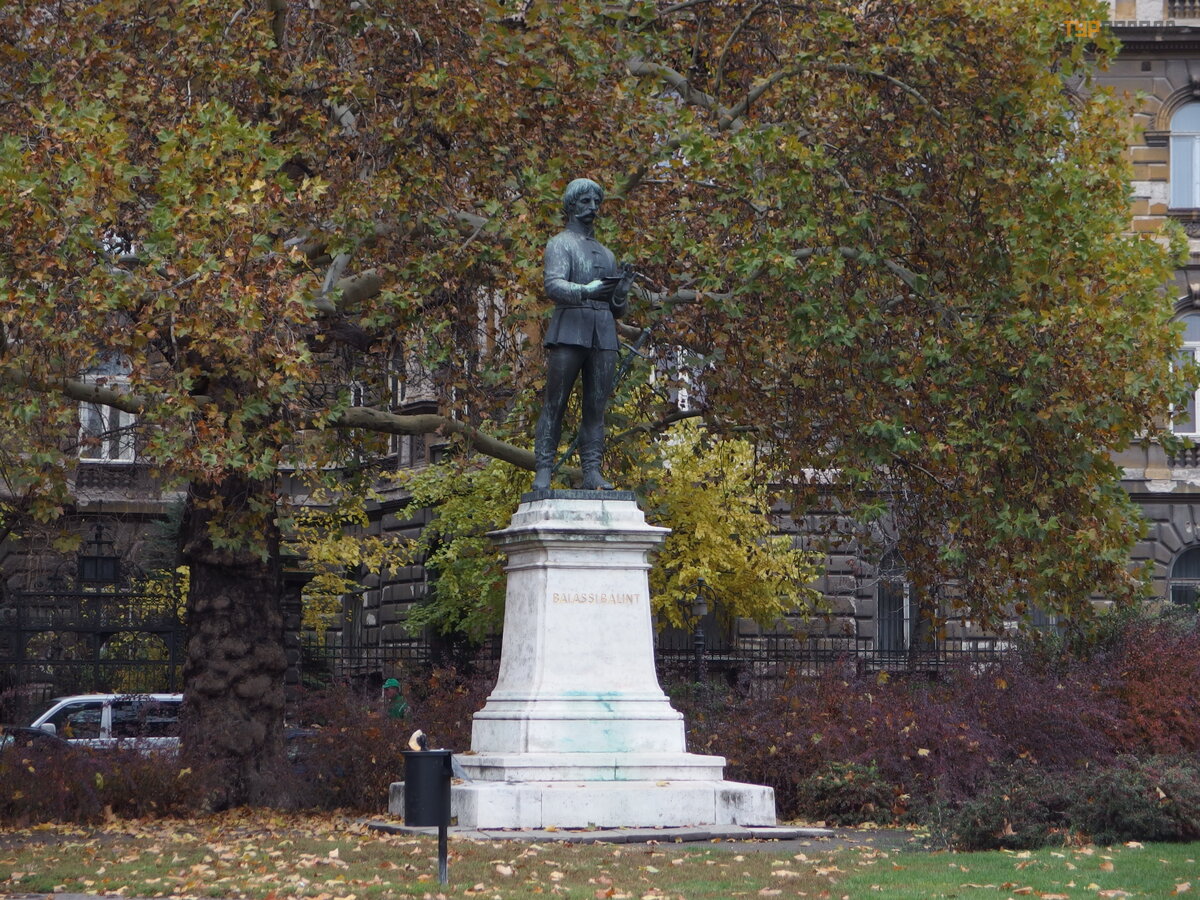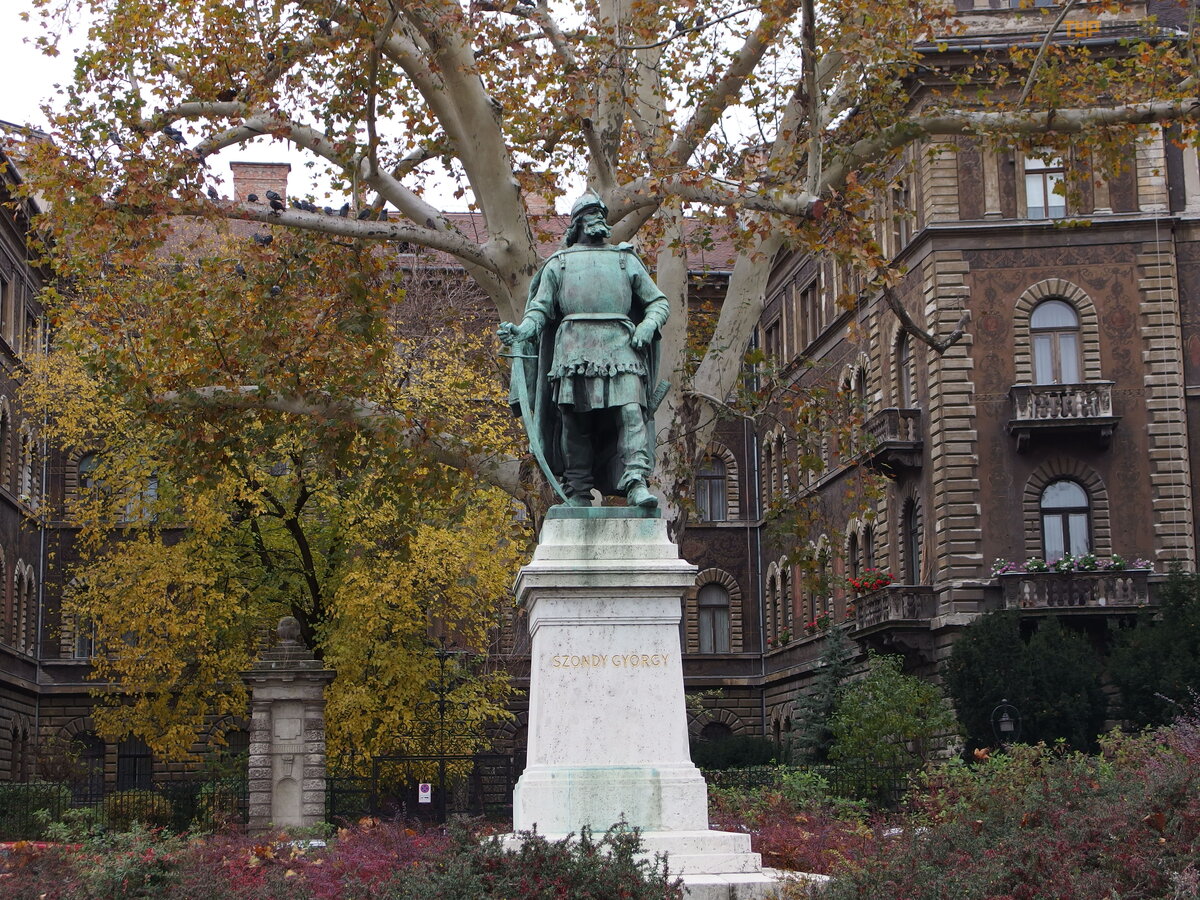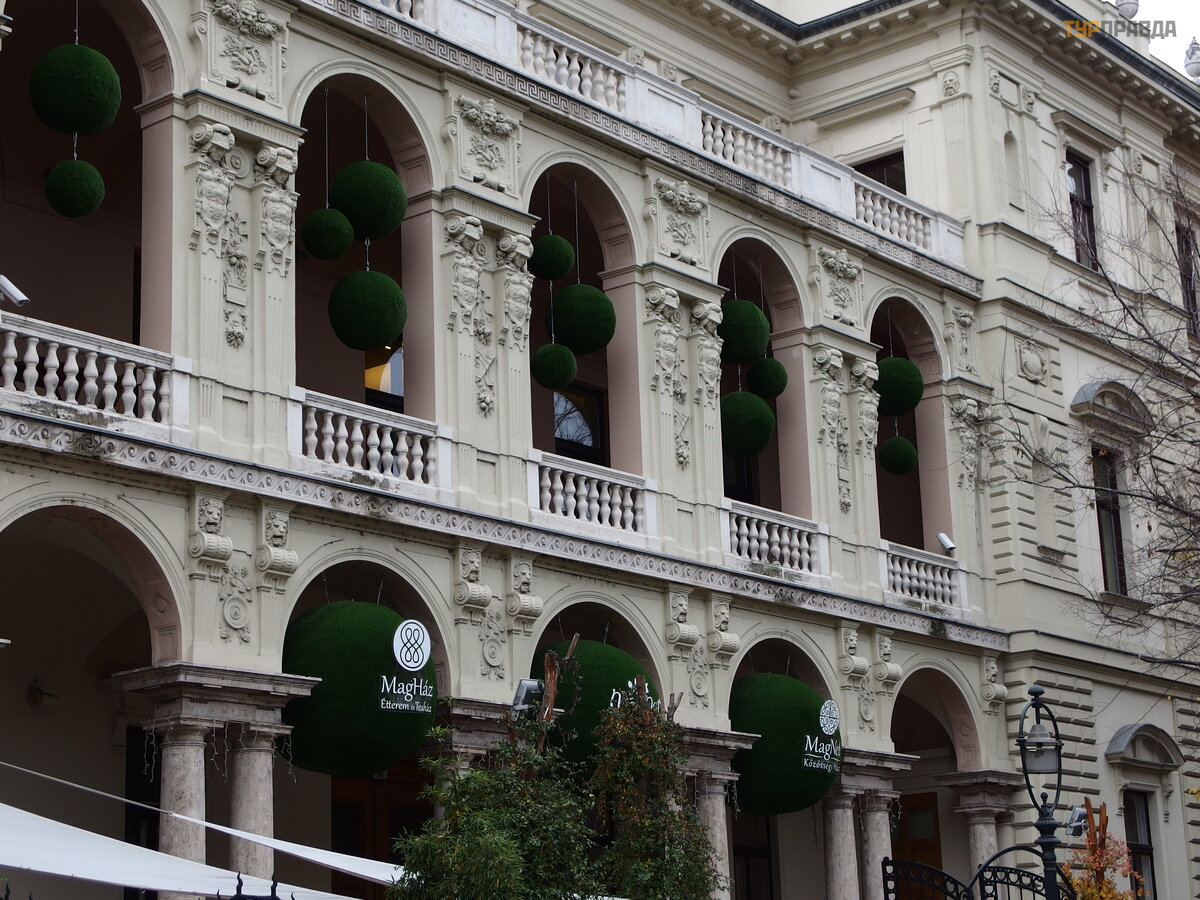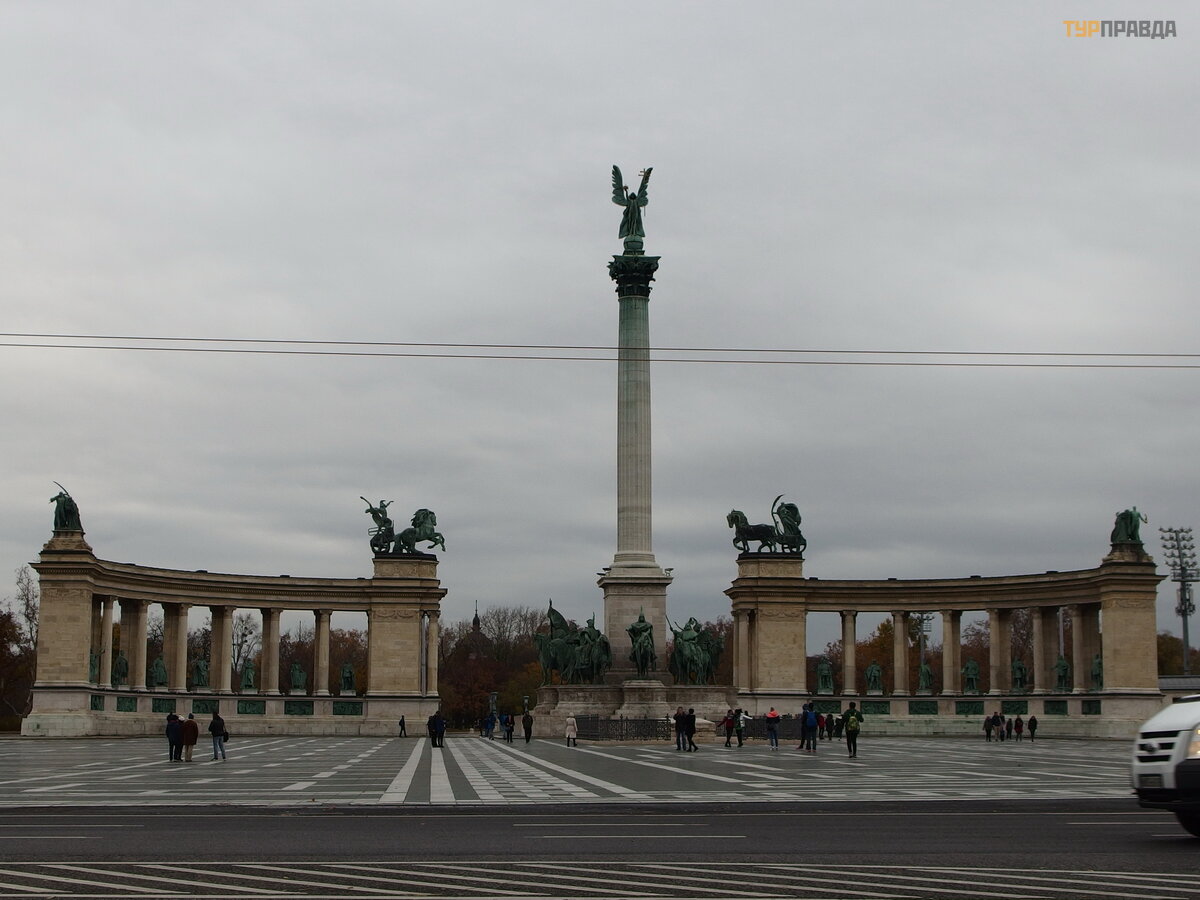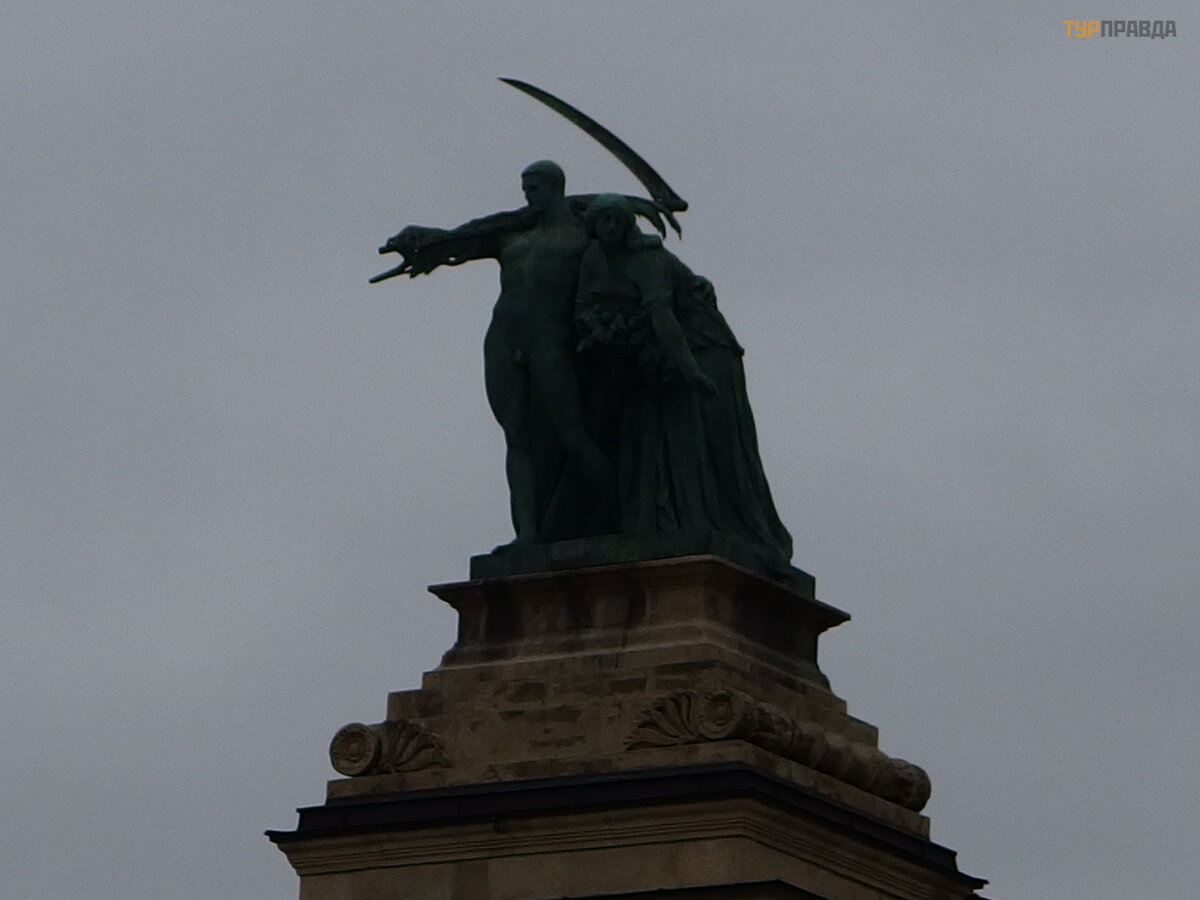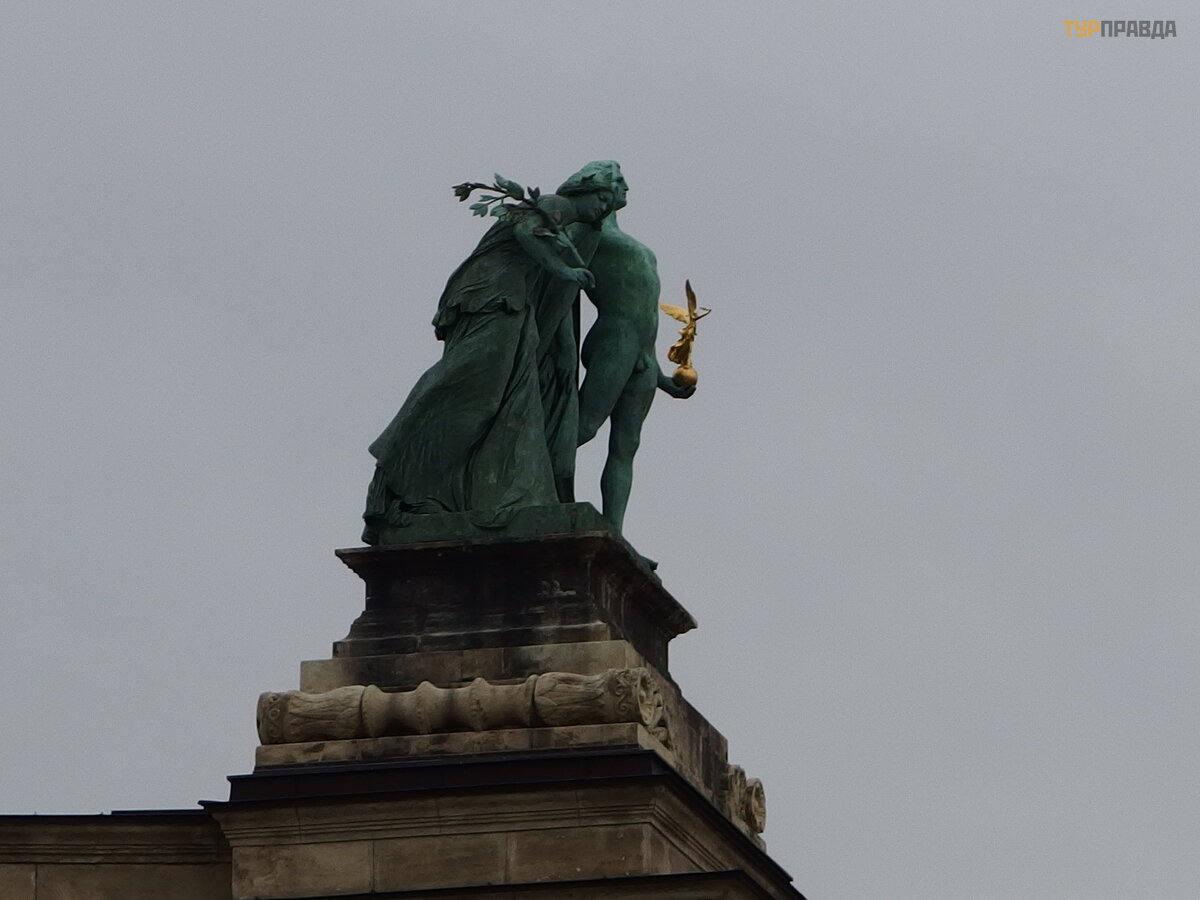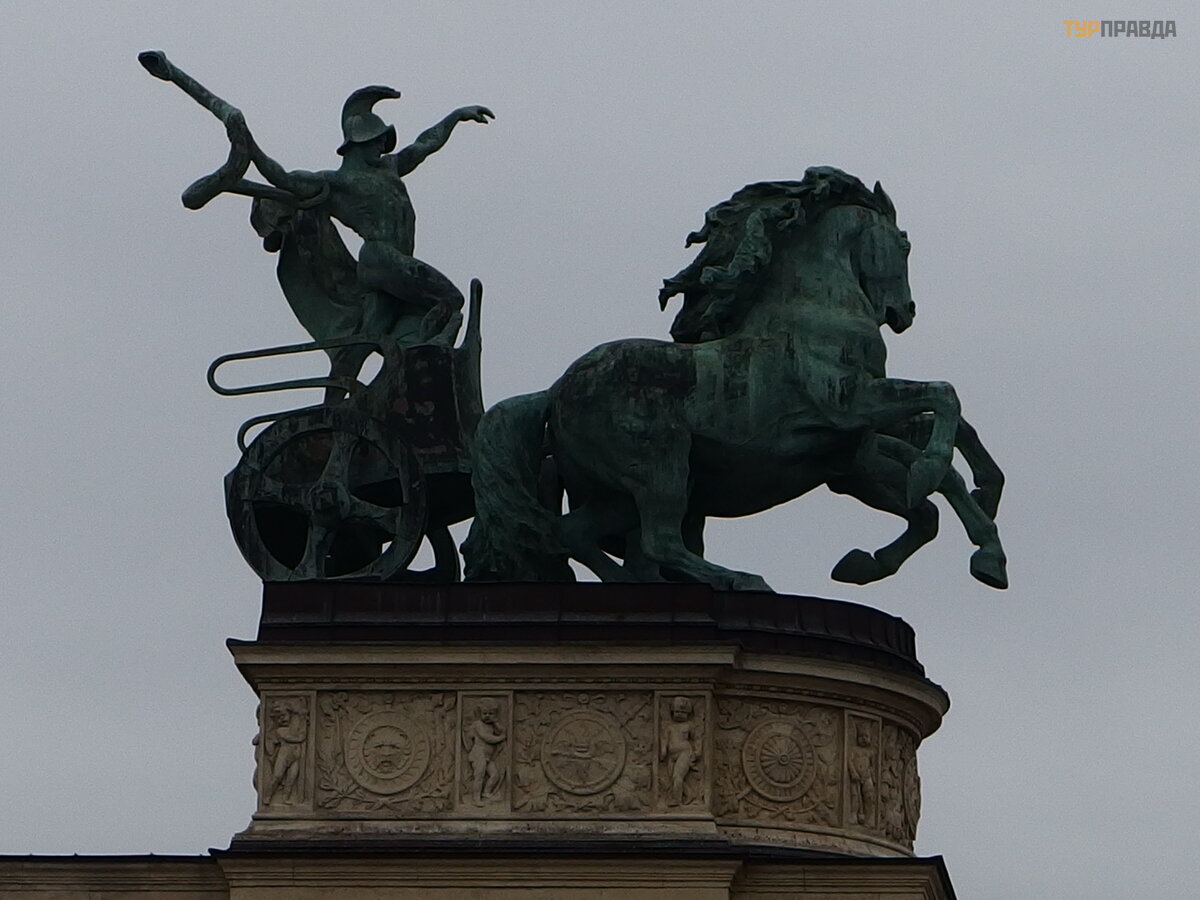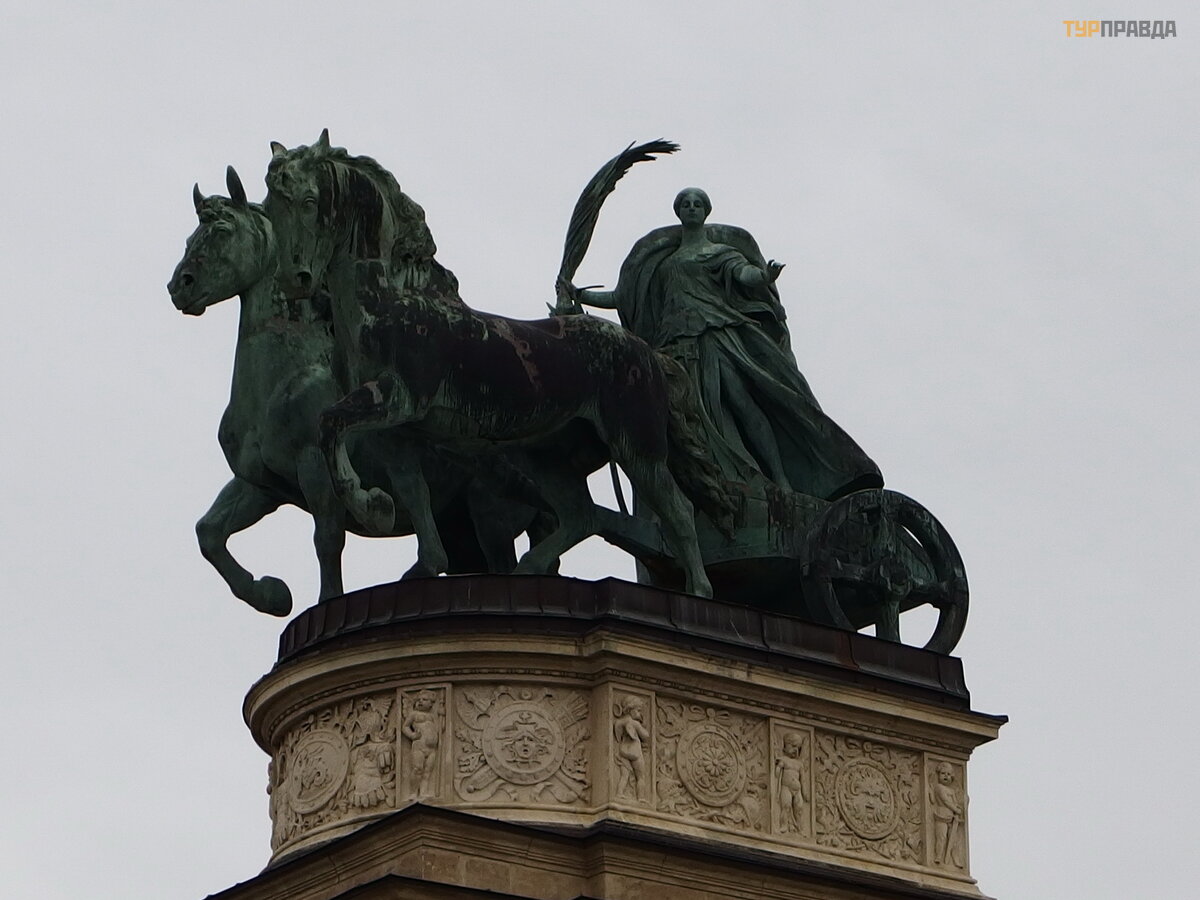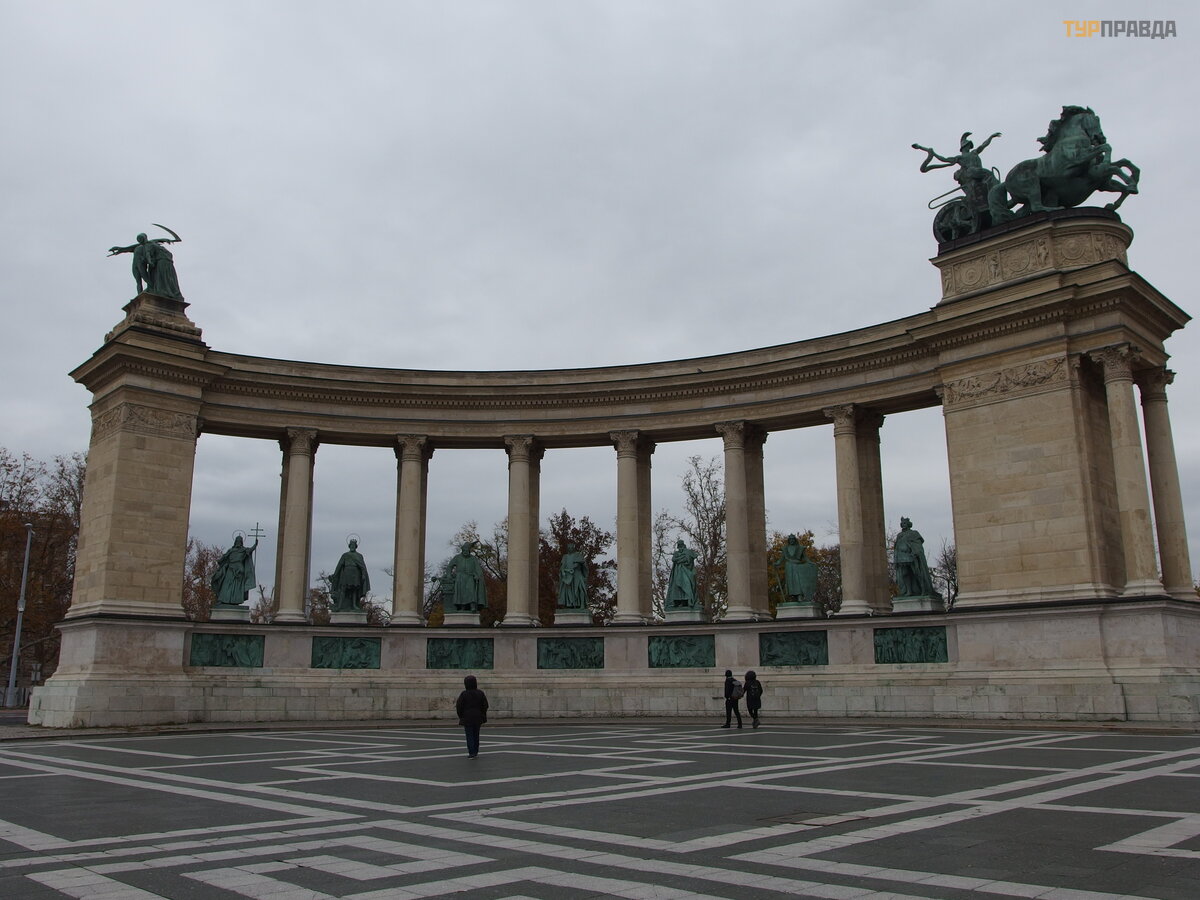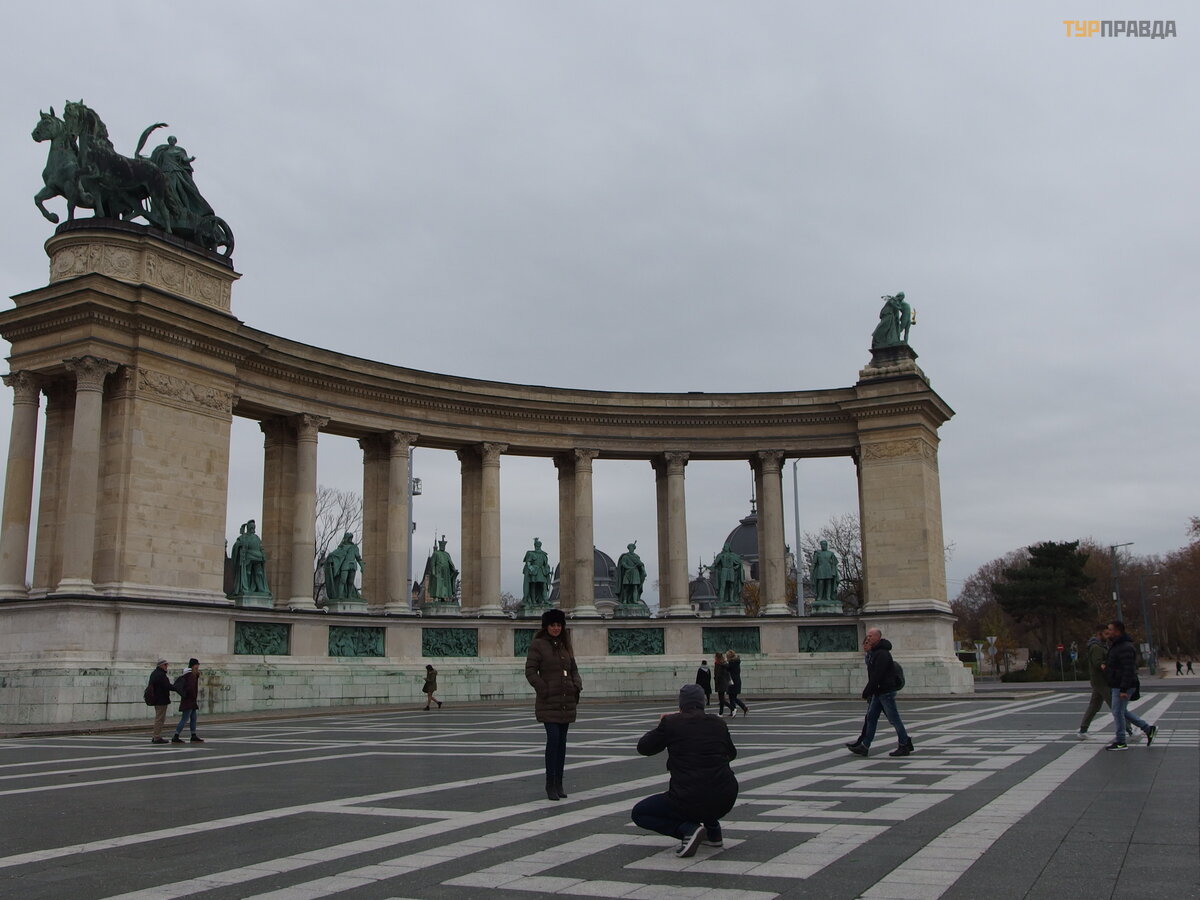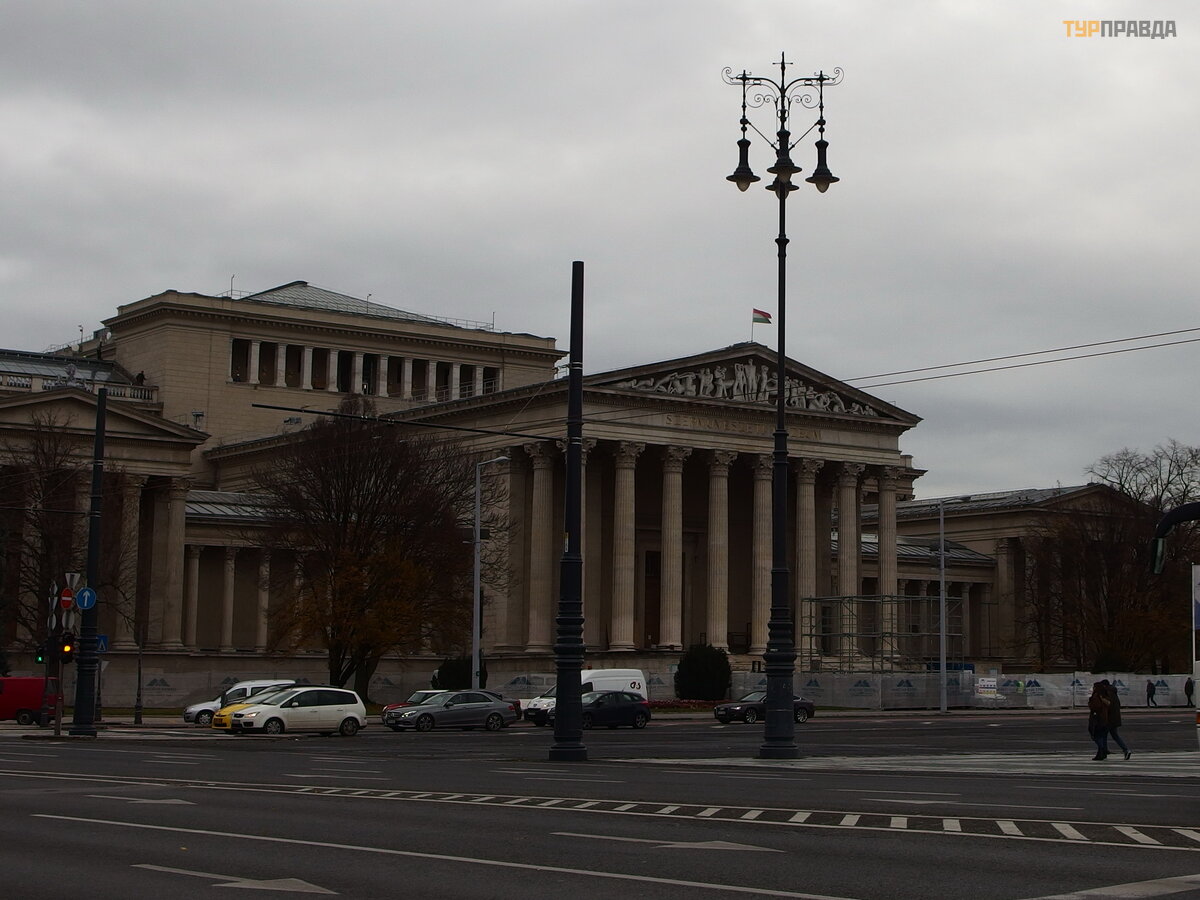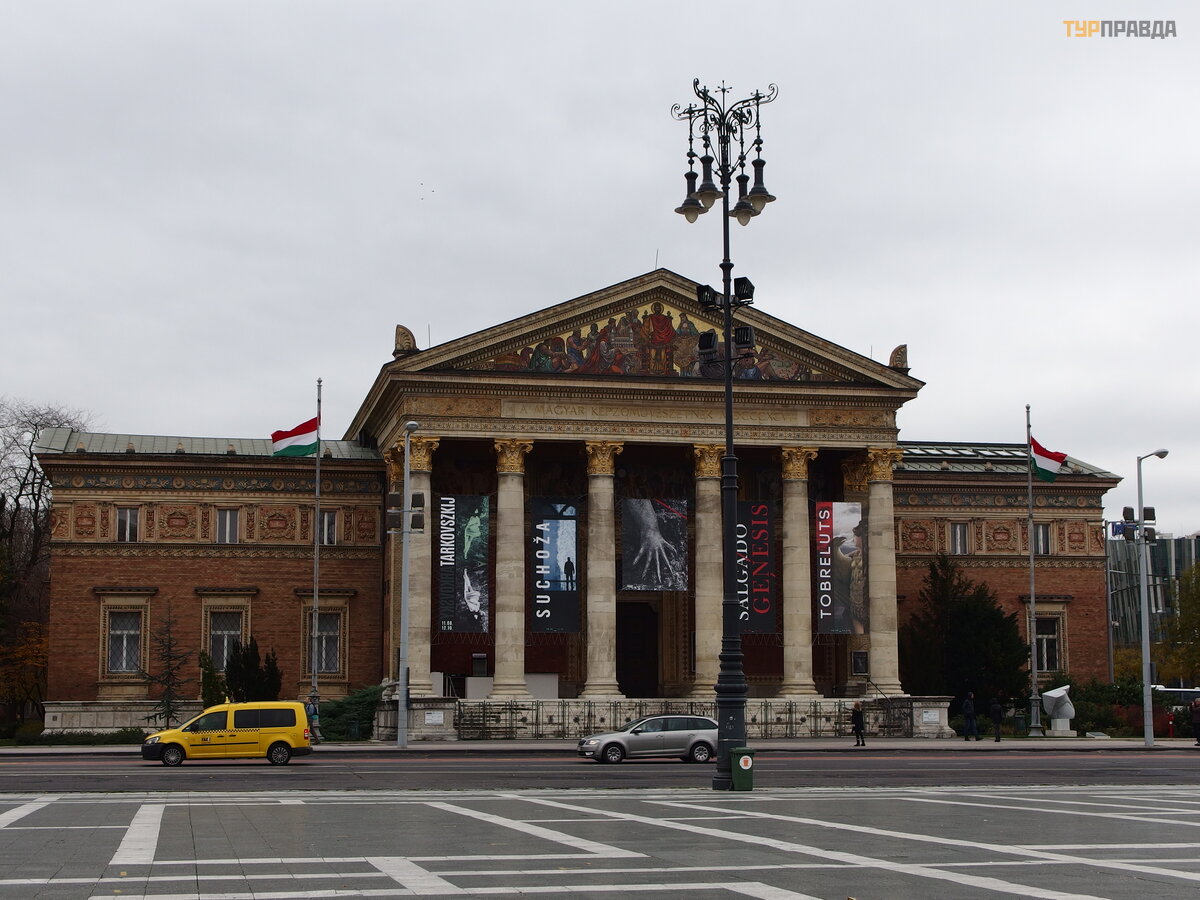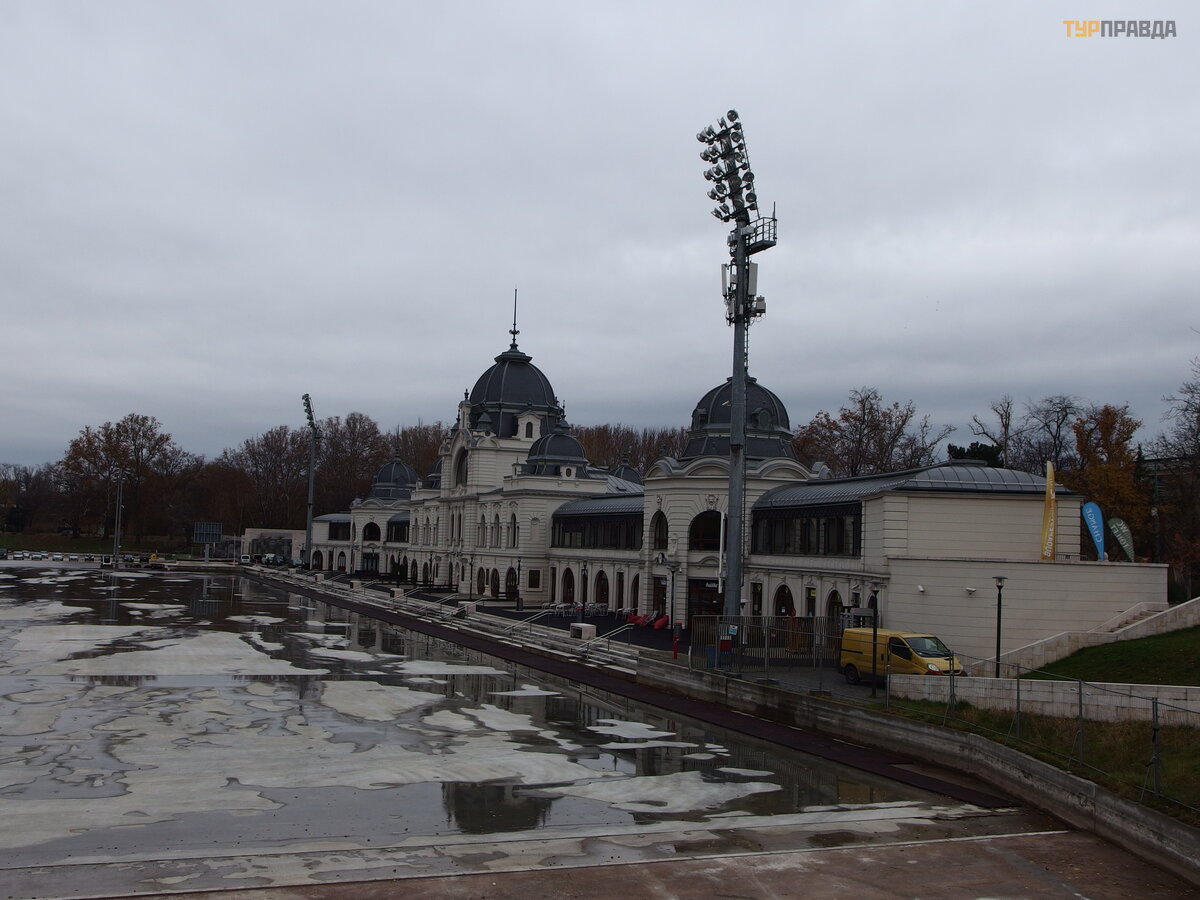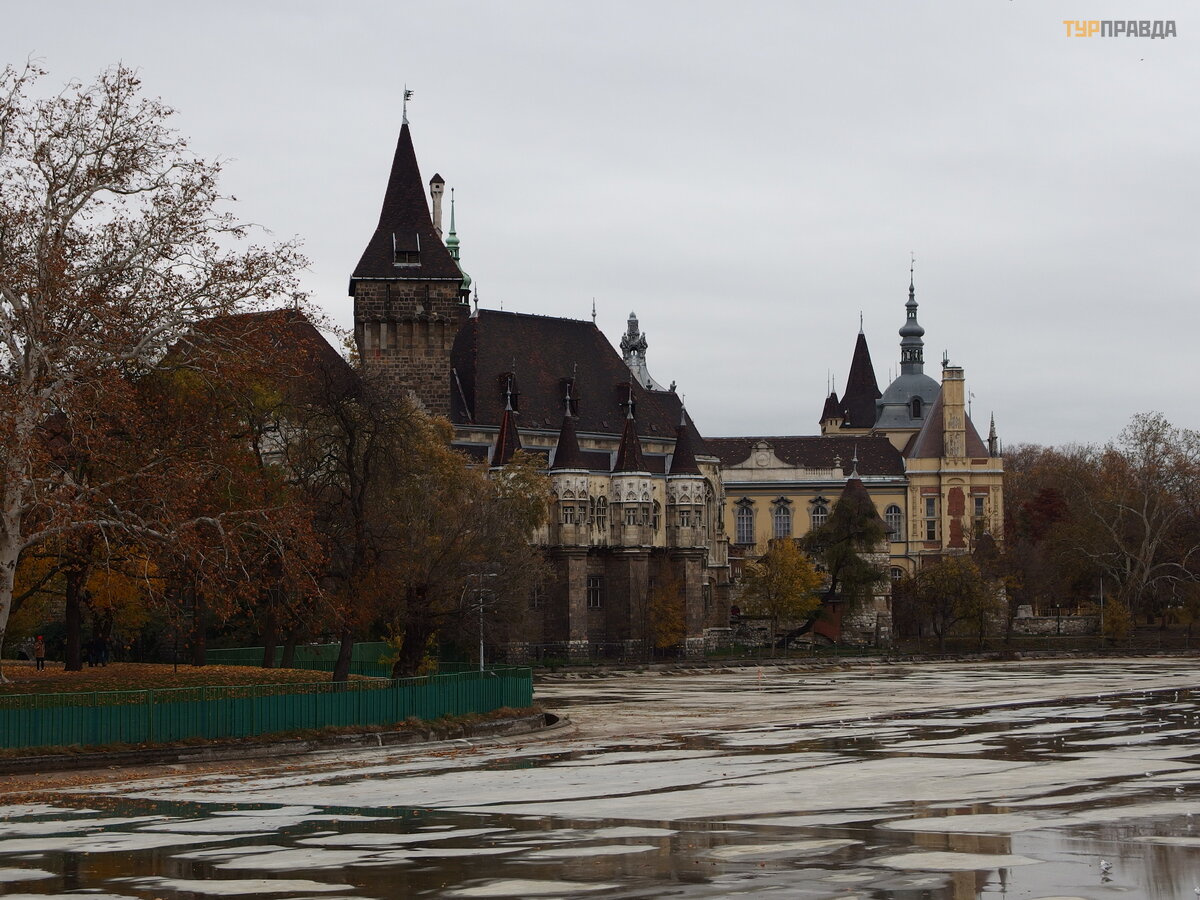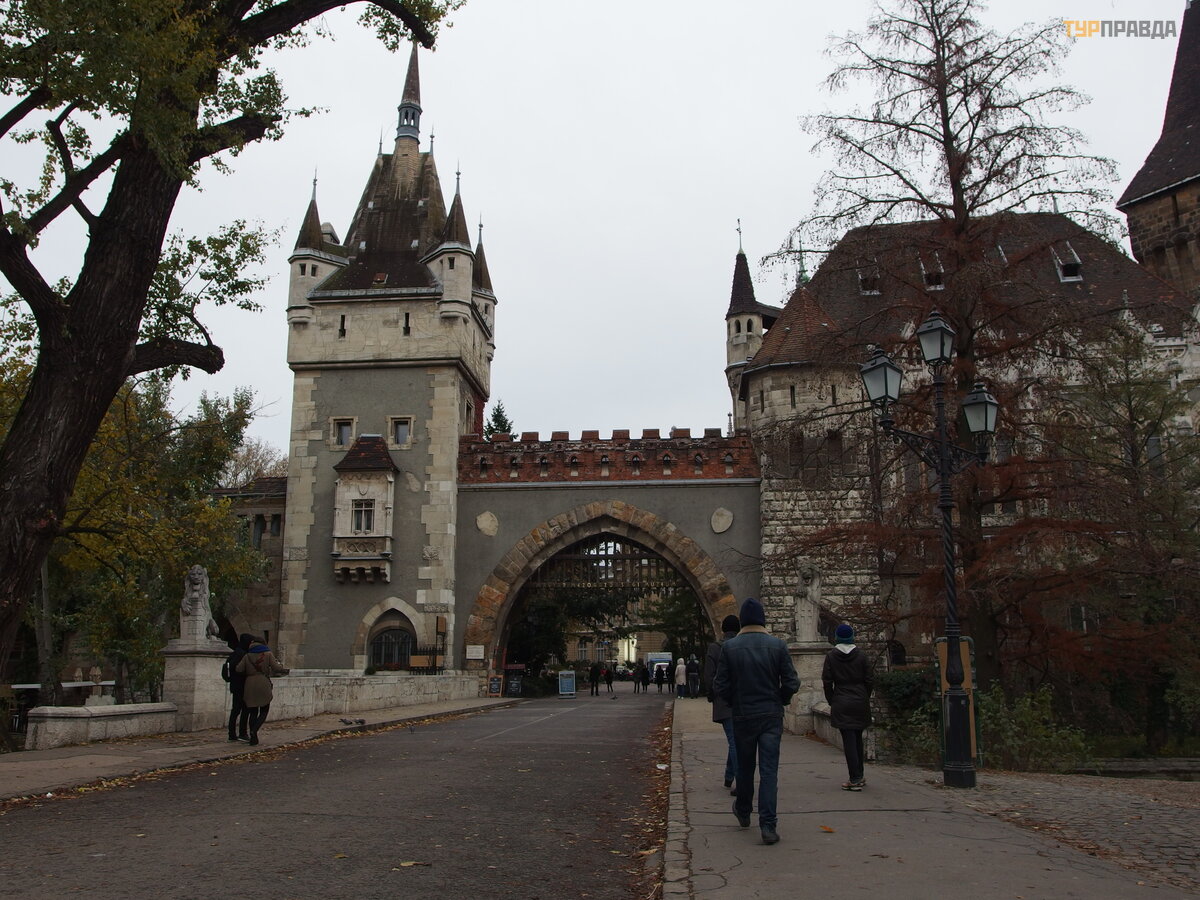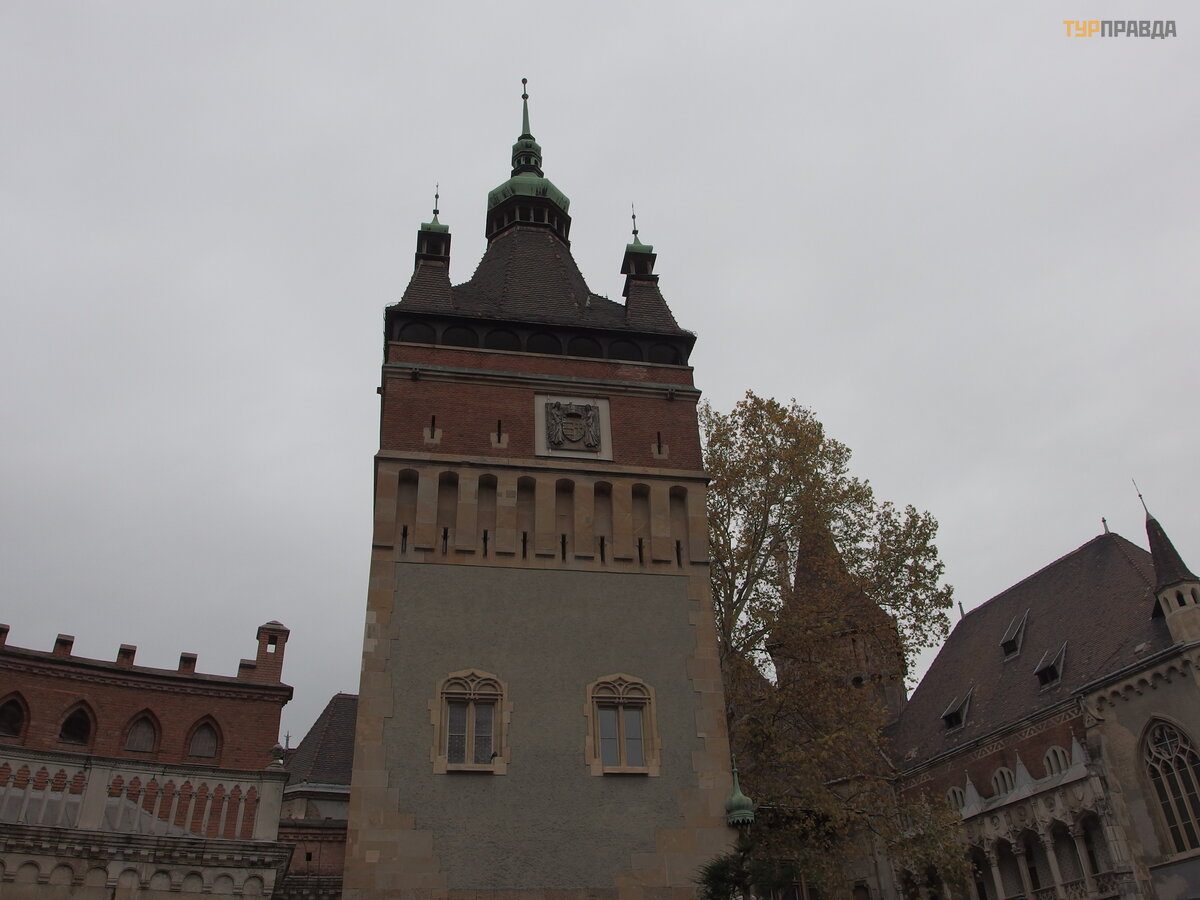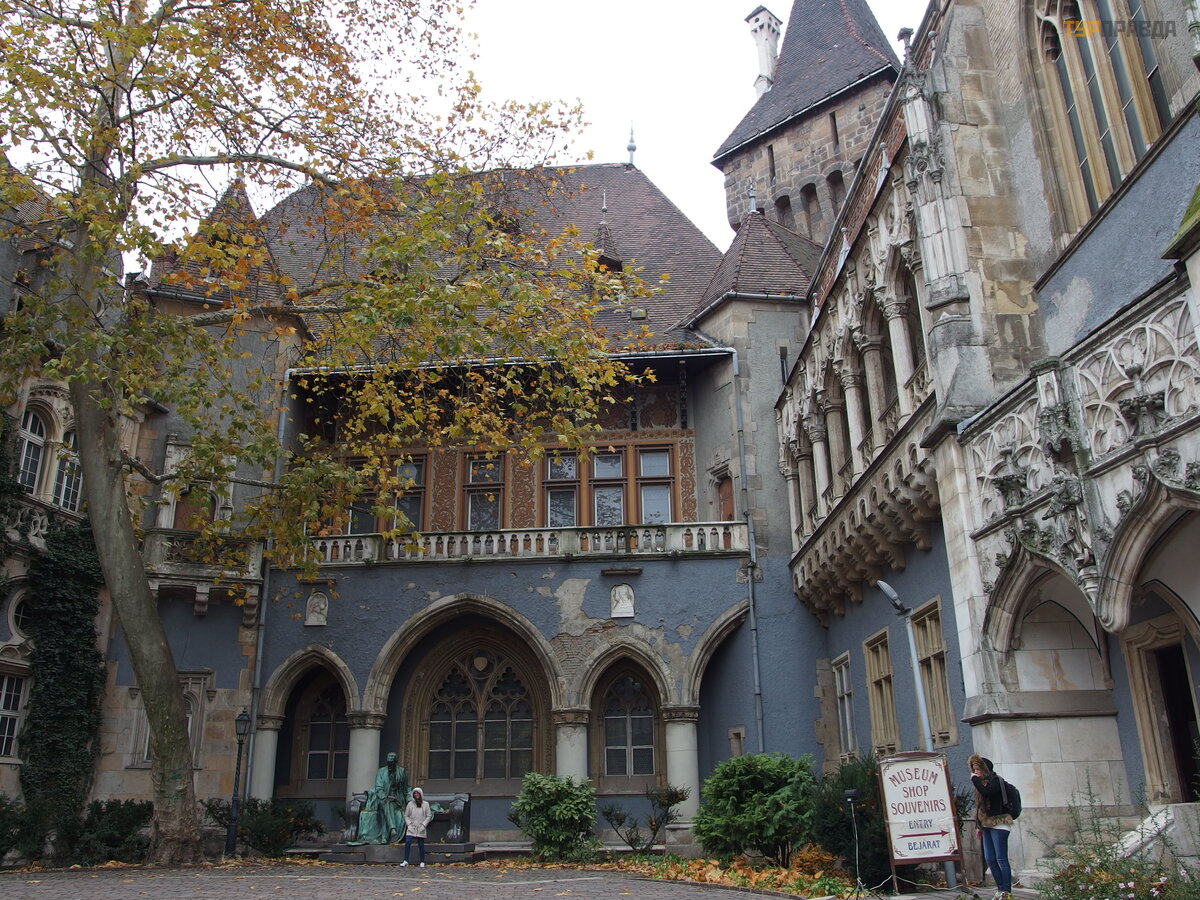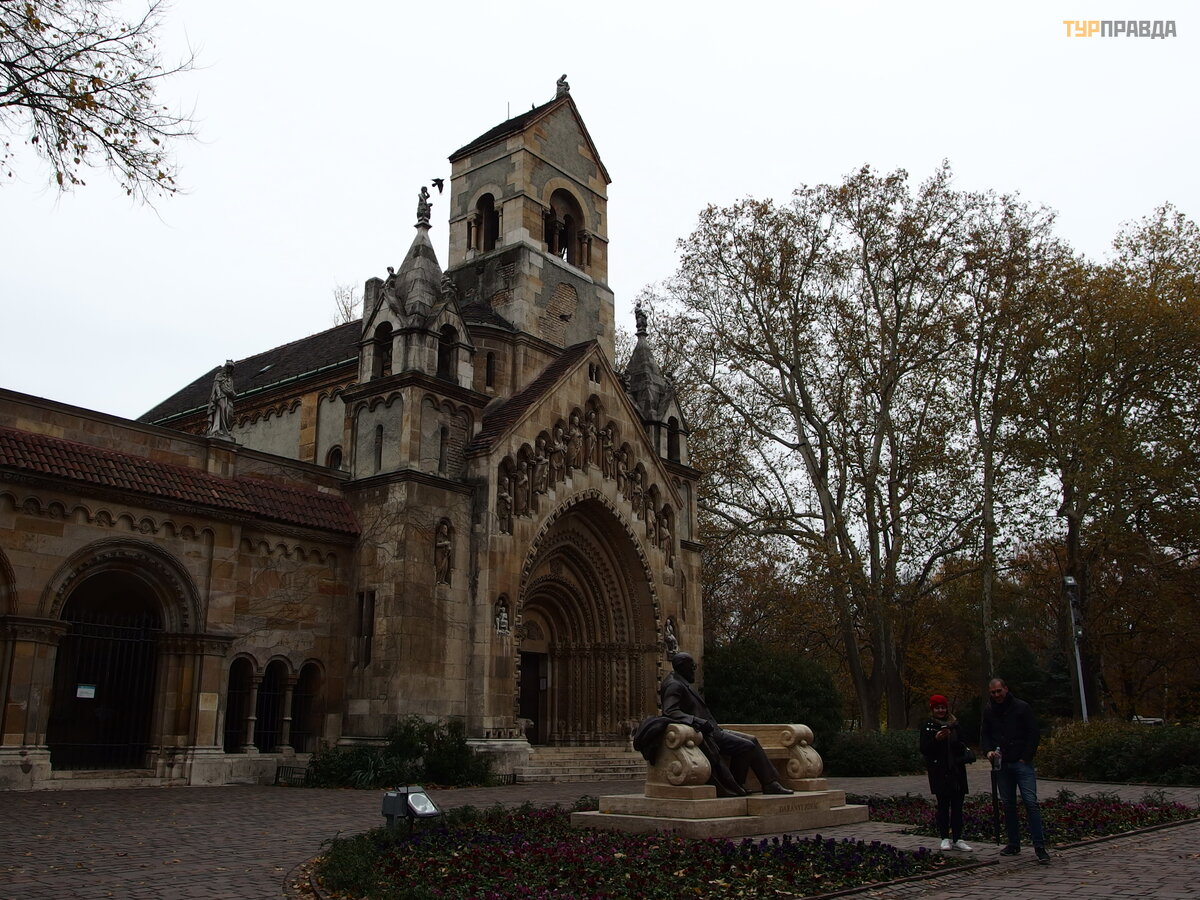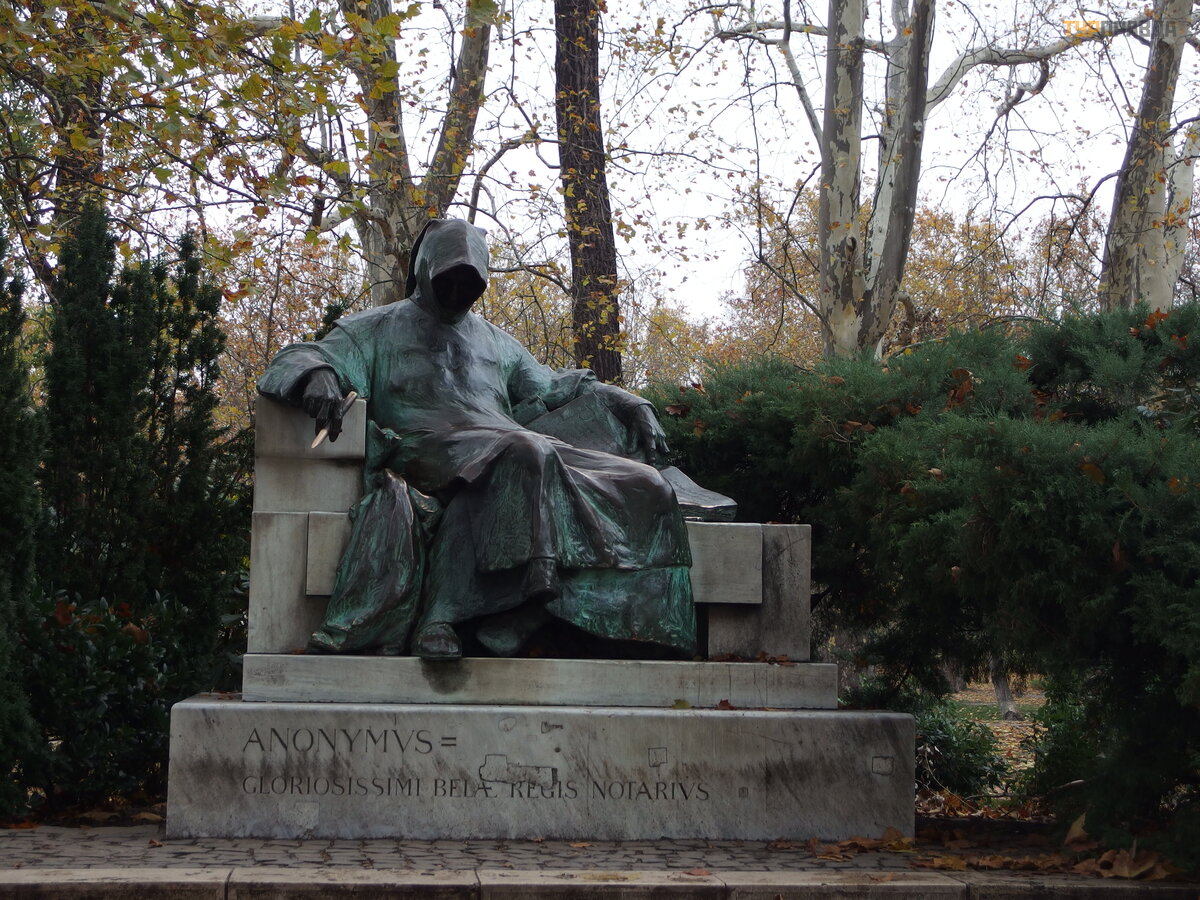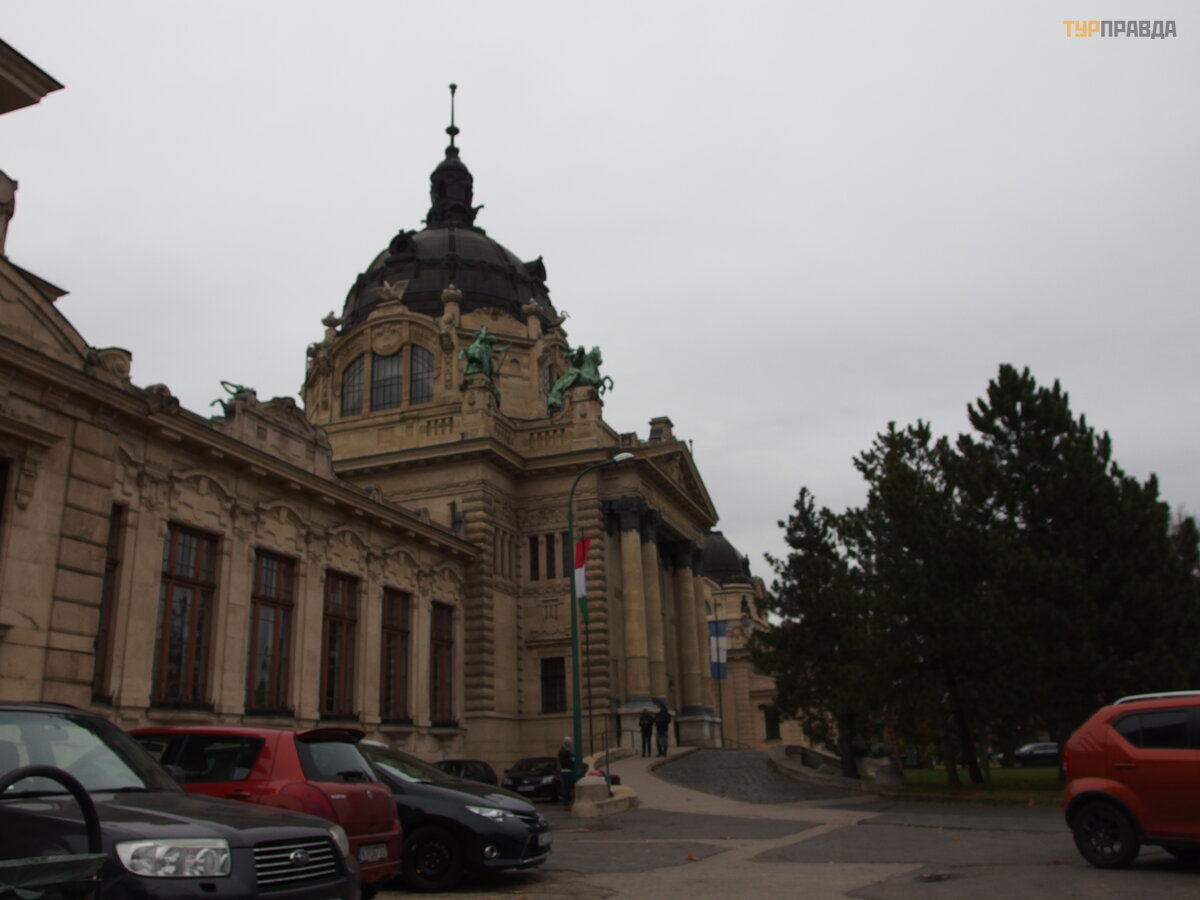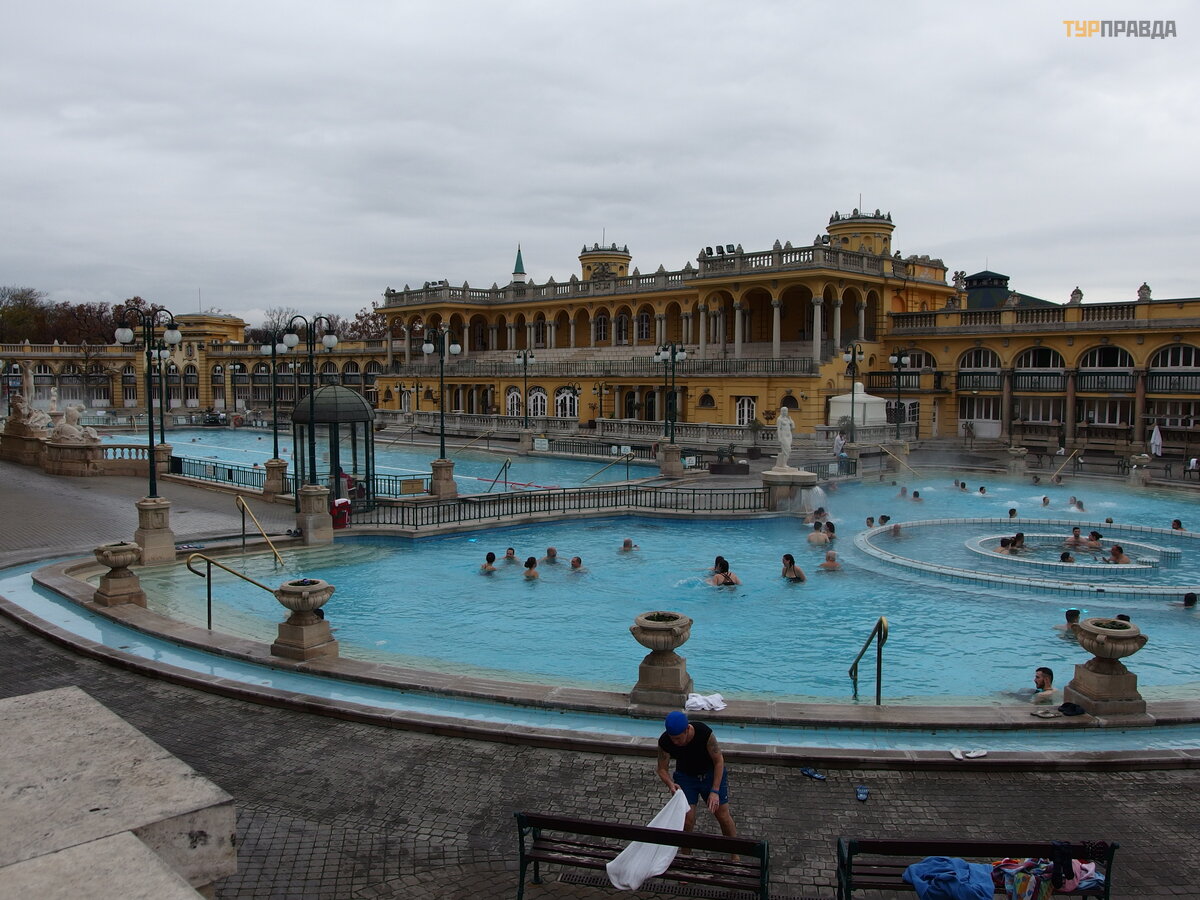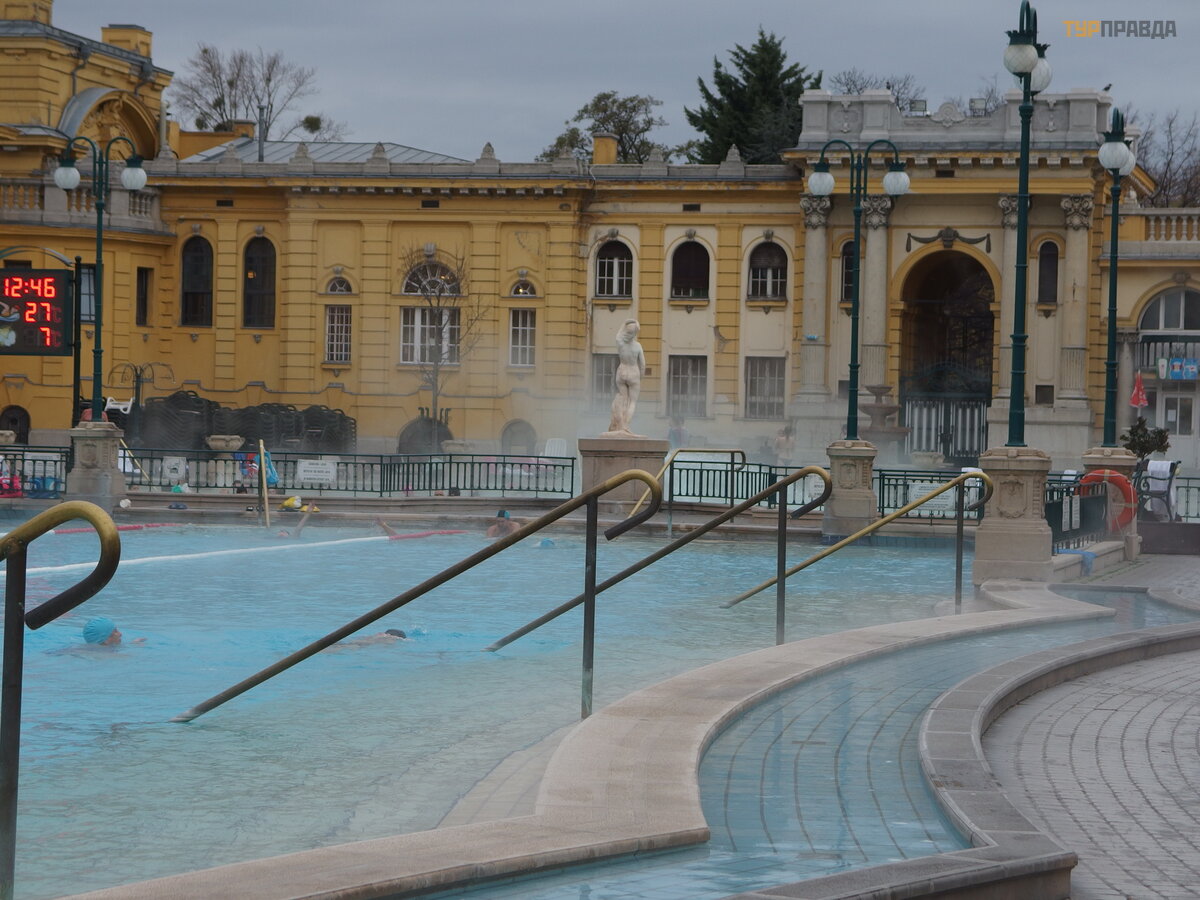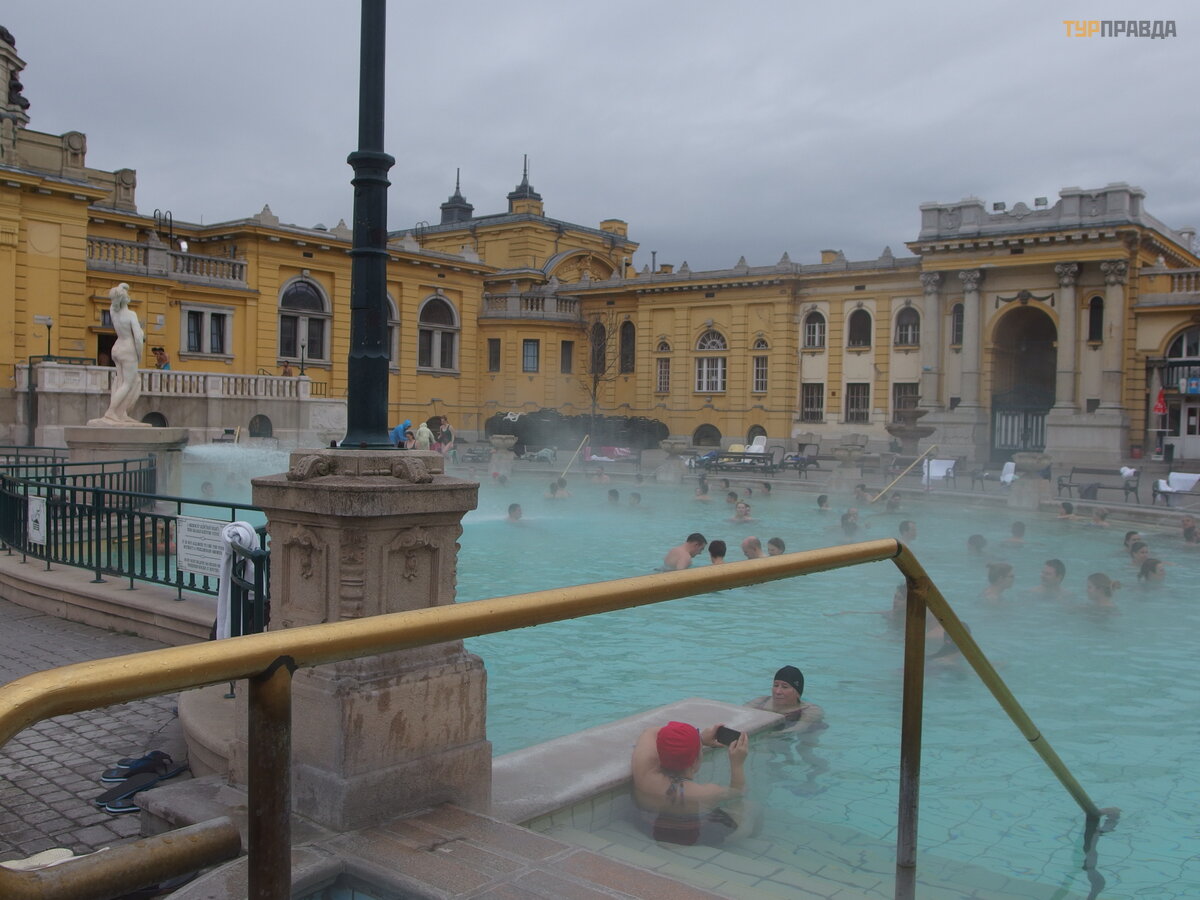Seven colors of Budapest. Continuation. Color blue
The seven colors of Budapest. The color is red. Orange color. Home
The seven colors of Budapest. Continuation. Color yellow
The seven colors of Budapest. Continuation. Color green
The seven colors of Budapest. Continuation. Color blue
Color blue - heroic.
The main focus of this route will be the most famous square of Budapest - Heroes' Square (Hsö k tere), it ends with the main avenue of the Hungarian capital - Andrá ssy.
And we will start from the square at the intersection of Andrassy Avenue with the Big Boulevard (Nagy korut) - Oktogon Square (Oktogon ter). The square forms an octagon - hence its name. It is built up with buildings designed by the architect Antal Skalnitsky, who preferred to create in the style of the so-called historicism. This work was the last great success of his career and won a prize at the World Exhibition in Vienna in 1873. From 1936 to 1945, the square was named after Mussolini, and with the coming to power of the communists, it was renamed the 7 November Square. The original name was returned to the square in the 1990s.
Moving along Andrá ssy Avenue we come to the House of Terror (Terror Há za, also Terror Museum):
The building, with a huge canopy carved with the word TERROR, houses the Museum of Victims of the Communist and Fascist Dictatorship. The place was not chosen by chance. During the war years, the headquarters of local fascists was located here, and in the 1950s, the National Security Service (an analogue of the Soviet NKVD) was located here. In the basements of the building, a prison was set up where political prisoners were kept. The museum was opened in 2002. His exposition immediately aroused heated controversy. According to critics, it depicts Hungary as a victim of foreign occupiers and does not fully cover the participation of the Hungarians themselves in the atrocities of the totalitarian regimes. At the same time, much more attention is paid to the communist period than to the fascist one.
At the intersection of Prospekt and Vorosmarty Street, in the old building of the Academy of Music (1877-1879, Adolf Lang), Franz Liszt's apartment museum is located. This building has become a long-awaited gift for students who have not had their own premises for a long time. In 1881, Franz Liszt also moved into an apartment in the same house, he lived in it until the end of his days. The exposition preserves the atmosphere, presents manuscripts of his compositions, as well as personal items, among which, for example, a unique "glass piano".
Next, we go to a no less heroic, but very charming square - Kodaly (Kodаly korond). In a circle, withlike scenery, lined up similar to each other houses in the Neo-Renaissance style with painted facades.
The composer Zoltan Kodaly lived in one of them. Today it houses his museum. The area is divided into four equal parts. In small squares with mighty plane trees, there are four monuments to the national heroes of Hungary. In the southern quarter there is a monument to Janos Botjan (1643-1709) (1958, Gyula Kovac Kish), nicknamed the Blind, because he lost one eye in the war against the Turks at the end of the 17th century. He participated in the battle for the liberation of Buda from the Ottomans.
On the same side of Andrassy Avenue there is a monument to another military leader, a representative of a noble Hungarian family - Mikló s Zrinyi (1508-1566) (1902, Jozsef Rona). He died heroically in 1566 during the defense of the Szigetvar fortress, of which he was the commandant, from the Turkish troops of Sultan Suleiman. For more than a month, almost 2.500 defenders held the fortress, which was besieged by thousands of Turkish armies. Finally, the Hungarians launched a desperate attack and everyone died. The Turks broke into the fortress, but the powder magazines blown up by Zrinyi suddenly flew into the air. During this siege, the Turks lost over 20.000 people killed.
Opposite the Zrinyi monument there is a monument to the national poet Balint Balassy (1554-1594) (1959, Pal Patzai) - the founder of Hungarian lyric poetry, who also distinguished himself in battles with the Turks. In one of them, during the siege of Esztergom, Balashshi died from his wounds.
The fourth monument is dedicated to Gyö rgy Szondi (? -1552) (1955, Laszlo Marton). He was the captain of the small fortress of Dregay in northern Hungary and distinguished himself during its siege by the Turks in 1552. Shocked by the courage of the deceased during the assault on Sondi, the Turkish pasha ordered the hero to be buried with full military honors. Over time, a whole cult associated with the name Szondi arose in Hungarian culture. He personified a talented young man of low birth, but with pure thoughts, who in a difficult situation showed fortitude and courage.
Walking along the avenue, admiring the charming houses.
And we enter the Heroes' Square, which was conceived as a pantheon of national heroes, and its creation is dedicated to the millennium of finding a new homeland by the Hungarians.
In the center of the square stands the Millennium Monument (1896-1929, architect Albert Schiedans, sculptor Gyö rgy Zala). The 36 m high column is crowned with the figure of Archangel Gabriel. In his right hand he holds the Holy Crown of the first Hungarian King St. Stephen, in his left hand - the so-called double cross. His image is also present on the modern coat of arms of Hungary. For this figure, Gyö rgy Zala received the first prize at the World Exhibition in Vienna in 1900. At the foot of the column on a high pedestal were the figures of seven horsemen. They represent the seven leaders of the tribes that came to the territory of modern Hungary: Teten, Ond, Kond, Tash (Lehel), Huba, Eled, and in front of the most important of them - Arpad, whose descendants founded the first dynasty of Hungarian kings. At a short distance in front of the column there is a heavy stone slab, fenced with a forged chain. This cenotaph is a symbolic grave of "heroes who died for the freedom and independence of their people and country. " Behind the cenotaph you can see a bronze plate. Before the construction of the pantheon of heroes, an artesian well was drilled on this site in 1877 to a depth of 970 m. A fountain was built above the well, which eventually gave way to a more grandiose building. Nevertheless, the water from this well still feeds the Szechenyi and Dagai baths.
Two semicircular colonnades complete the Millennium. The left one is crowned with two allegorical figures, meaning Labor and Welfare. . .
. . . the right one - Knowledge and Glory.
From the inside of the colonnades, chariots with allegorical figures of the War face each other. . .
. . . and Mira.
In the niches of the colonnades there are 14 sculptures of kings and national heroes who played a significant role in the history of Hungary. From left to right are:
Istvan I the Saint (1001-1038) - the first king of Hungary of the Arpad dynasty, who completed the creation of the Hungarian state and initiated its Christianization;
Saint Laszlo I (1077-1095), revered by the people, around whose name a romantic image of an ideal Christian knight-king arose;
King Kalman the Scribe (1095-1116), who forbade the burning of witches;
King Andrew II (1205-1235), who issued the Golden Bull, which established the inviolability of the privileges of magnates;
King Bela IV (1235-1270), who restored the country after the devastating raids of the Tatar-Mongols;
King Charles Robert (1308-1342) - the first representative of the Angevin dynasty on the Hungarian throne;
King Lajos I the Great (1342-1382), thanks to whose military victories an empire was born, "whose shores were washed by three seas";
Janos Hunyadi (1387-1456) - general who fought against the Turks, governor of Transylvania, father of the future king;
King of the Hunyadi clan Matthias I Corvinus or the Just (1458-1490), under whom culture flourished in Hungary;
Istvan Bocskai (1557-1606) - leader of the anti-Habsburg uprising of 1604-1606;
Gabor Bethlen (1580-1629) - king of Hungary in 1620-1621, under him the heyday of the Transylvanian principality began;
Imre Thö kö ly (1657-1705) - leader of the anti-Habsburg uprising of 1679-1681;
Ferenc Rakoczy (1676-1735) - leader of the national liberation war against Austria in 1703-1711;
Lajos Kossuth (1802-1894) - revolutionary, participant in the revolution and the war of independence of 1848-1849.
When the monument was ready, sculptures of five Habsburg rulers were installed in the last five niches, but after the Second World War they were removed and replaced with those that can be seen today. Despite the patriotism of the monument, its fate was not easy. So, in the short era of the Soviet Republic in Hungary, the monument was draped with a red cloth, on top of which a plaster image of Marx, Engels and a worker was placed on a column. In the post-war years, the threat of demolition loomed over the monument, because Matthias Rakosi did not like it, who considered this monument "a manifestation of excessive nationalist feelings. " However, everything worked out, and the square acquired its finished look after 1956.
On June 16.1989, almost 250.000 people gathered here to take part in the reburial of the remains of Imre Nagy, Prime Minister, one of the main participants in the events of 1956, who was executed in 1958. It is noteworthy that before his arrest, he took refuge in the building of the Yugoslav embassy, which was located on the corner of Andrá ssy Avenue and Heroes' Square. Now it houses the diplomatic mission of Serbia.
On both sides of the square are two buildings in the neoclassical style Museum of Fine Arts. . .
. . . and the Museum of Modern Art.
Museums of Fine Arts (1906, Albert Schickedanz and Fü lö p Herzog) is the largest collection of foreign art in Hungary. It was based on private collections, including the Esterhazy and Zichy families. The collection includes monuments of ancient Egyptian, antique, Byzantine, old Hungarian art, a unique collection of European graphics of the 15th-20th centuries, paintings and sculptures by European masters of the 13th-20th centuries. The main entrance to the museum is adorned with a massive portico with Corinthian columns. On its pediment is a copy of the sculptural composition from the western wall of the temple of Zeus in Olympia (Greece). It depicts one of the famous episodes of ancient Greek mythology, telling about the battle of centaurs and lapiths at the wedding of Perithous.
Contemporary Art Hall (1896, Albert Schickedanz). The building is designed in the form of a basilica. The facade is decorated with a six-column portico. On the pediment is a mosaic by Jene Haranga on the theme of St. Stephen, the patron of the arts.
Across the Olof Palme street from the Hall of Arts, in the shadow of tall plane trees, there is a skating rink pavilion (1895, Imre Francek), which operates in winter. It was built on the site of a burned-out similar building and gave a new impetus to the popularity of skating among the townspeople. In January 1908, the European Speed Skating Championship was held here.
And through a small bridge we get to the Varosliget City Park.
Historical note: The park is located on the site of former swamps. Since 1298, on St. George's Day, the State Assembly has been meeting here. In the middle of the 15th century, this area was the hunting grounds of King Matthias. In 1808, it was decided to lay out a park on this territory. The idea was warmly supported by Archduke Joseph and presented several seedlings of plane trees, which still grow in the park today. The layout was entrusted to the French garden architect Enric Nebbien. In 1896, the World Exhibition was organized on the territory of the park, which demonstrated all the most modern achievements of Hungary at that time. For this event, on the island in the middle of an artificial lake, copies of buildings located on the territory of the Kingdom of Hungary were built, representing the main architectural styles.
All structures were temporary. However, the public liked the idea so much that after the end of the exhibition, it was decided to recreate these copies from durable materials. The reconstruction of the complex of historical buildings, popularly called Vajdahunyadvar, was led by the architect Ignaz Alpar.
To the left of the lancet gate of the main entrance rises the 37-meter Torture Tower, reminiscent of the bastion towers of the Upper Hungarian fortresses. To her right is a more squat Truncated Tower from the city of Sighisoara in Transylvania.
Behind it is the Gothic tower "Do not be afraid" from the fortress of Vajdahunyad (Hunedoara in Romanian) in Transylvania, the ancestral castle of the Hunyadi family, who gave King Matthias.
Next is the facade of the knight's hall of this castle (this part gave its name to the entire historical ensemble, which is commonly called the Vajdahunyad castle, although in reality it is represented only by separate fragments).
Today it houses the Agricultural Museum. It, in particular, shows the skeleton of the most successful racehorse in the world named Kincsem, which translates as "my treasure". This unique mare took part in 54 races during 4 seasons and never lost. Abroad, she was called the "Hungarian miracle. " When Kincsem died in 1887 at the age of 13, newspapers in Hungary appeared in mourning frames, and flags were flown at half mast in the country. The memory of the legendary horse was immortalized by creating a museum dedicated to it. A park in Budapest is named after her. In the southern corner of the Baroque palace from the side of the lake, a copy of the Catalin Tower from Bran Castle in Transylvania, where the famous Count Dracula lived.
Opposite the main facade of the palace there is a monument to the chronicler, nicknamed Anonymous (1903, Mikló s Ligeti), who lived at the end of the 12th - beginning of the 13th century. His chronicles tell about the early period of Hungarian history, including the acquisition of a new homeland by the Hungarians. There are many monuments to famous personalities in the park. So, for example, next to the island, on which the complex of historical buildings is located, in 1906 a monument was erected to the first American president George Washington (1732-1799) (1906, Gyula Bezeredi ). This monument was made with donations from Hungarians who immigrated to America in the 19th century.
There are several other interesting locations in the park that are worth visiting. If you walk behind the Museum of Fine Arts along the lake, you can visit or see the Gundel restaurant. It is named after the famous culinary dynasty founded by Janos Gundel (1844-1915). His son Karoy, thanks to his culinary skills and excellent entrepreneurial skills, turned this institution into one of the most famous in Europe. Sometimes he hired an entire symphony orchestra to entertain guests. During his life, Karoly Gundel wrote several cookbooks that were translated into foreign languages and are considered to be among the best about Hungarian cuisine to this day. The famous dish of the restaurant to this day is gundelevski pancakes - “gundel pachinta”. There are many celebrities among the guests of the institution - Pope John Paul II, Queen Elizabeth II of Great Britain, former President of France Jacques Chirac and many others.
Immediately behind the restaurant you can see and visit the metropolitan zoo. Its hallmark is the Art Nouveau entrance with elephants by Cornel Neuschloss. It opened in 1866, becoming the first zoo in Central Europe, where animals were kept in conditions close to natural. At the beginning of the 20th century, the private zoo went bankrupt and was bought by the city council. At the same time, its reconstruction began. Two young architects were involved in the work - Karoly Kosh and Dezho Zrumechki, who drew their inspiration from medieval folk art, combining it with fashionable trends in architecture at that time. They sought to place each animal in an environment that resembled a natural habitat, and at the same time reproduce the typical architectural elements of those places. Unfortunately, much of that work has not survived to our time.
After walking down Allatkerti Street to the Szechenyi baths (opposite), there is a not very conspicuous building of the capital's circus. It was built in 1971 on the site of an old circus, the first performance of which took place in 1891.
And if you walk along Dozsa Gyorgy Street from the Museum of Modern Art, you can see an interesting monument The Wheel of Time - this is the largest hourglass in the world (8 m high). The Wheel of Time is constructed from such durable materials as granite, stainless steel, and special impact-resistant glass, applied with the expectation of long-term functioning of a mechanism that is simple in its basis, but very complex due to the size of the mechanism. The fusion of the ancient method of counting time and the technologies of the 21st century (represented by a complex semi-automatic mechanism for controlling the pouring of sand using a computer) turned the Wheel of Time from an ordinary tool into a real work of art, personifying time. At 00:00 on April 30.2004, Hungary joined the European Union. The grand opening of the monument became a symbol of a new era in the development of Hungary, the beginning of a new chronology. Once a year, on December 31, the Wheel of Time makes a half circle turn (each time in one direction), the upper chamber, already empty by this moment, moves down, and a new annual cycle of sand pouring begins. The reversal of the clock is carried out by the ordinary application of physical force without the use of any engines, only with the help of cables and a simple mechanism. Such simplicity was intended to once again remind us all of those thousands of years that have passed, during which the only thing that could move a large and heavy object was human perseverance and strength.
And traditionally located in the park, the Szé chenyi baths:
In the 80s. In the 19th century, mining engineer Vilmos Zsigmondy discovered a source of healing thermal water here and laid a balneo-resort pavilion on this site. In the period from 1909 to 1913, a large-scale bathing complex "Szechenyi" was built here, which has no equal in the Old World to this day. His project organically combines elements of architectural styles characteristic of the turn of the 19th-20th centuries. In 1927, the complex was expanded with a men's and women's public baths, as well as a new beach wing. If on the Buda side numerous natural thermal springs played a significant role in the formation of settlements and the development of bathing culture, on the Pest side until 1878 there were neither springs nor wells with thermal water. The world-famous Hungarian scientist and engineer Vilmos Zsigmondy in 1868 began deep drilling in the Varogyliget park. As a result, medicinal water with a temperature of 74 degrees Celsius escaped from a well 970 m deep. This well gave 350-400 liters of water per minute. Although a proposal for the construction of a bath came from Brussels to Budapest, the city council itself began the construction of the predecessor of today's bath, the Artesian bath.
Opened in 1881, the Artesian Bath had 20 baths, one communal public bath and 6 hotel rooms. But it was only for a short time that it could satisfy the growing demands and needs. In one of the largest and most beautiful parks in Budapest, Varoš liget, in 1909, according to the project of the university professor Gyozo Ziegler, the construction of the Szé chenyi healing bath was started. Consisting of a main and two side buildings in the eclectic style, the bath with a large dome over the main entrance and smaller domes over the corners of the complex was built in 1913. The new therapeutic bath, both in general impression and in its details, made a very strong impact on visitors. In 1927 the complex was expanded. During the Second World War, the baths were noticeably less damaged than the Buda Baths, so in the spring of 1945 it already began work. In 1963, the bath was reconstructed for use in the winter.
It was warm outside +1 : )))
Continued by here >>>

